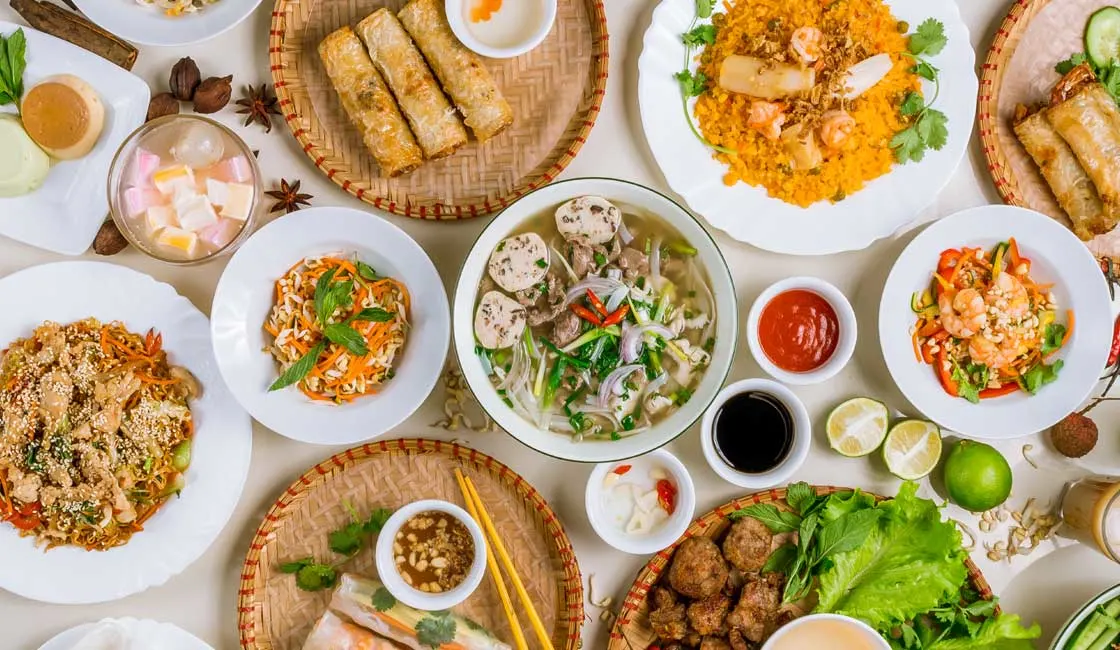Take Me to The Recipes
Vietnam, a slender, dragon-shaped country nestled in the heart of Southeast Asia, boasts a lush and diverse terrain. It ranges from the sprawling Red River Delta in the north to the magnificent Mekong Delta in the south. Vietnam is not just a feast for the eyes but also for the palate with its exquisite Vietnam cuisine.
Its typical climate is tropical in the south and monsoonal in the north with a pleasantly cool season. With the South China Sea gracing its eastern coast, it offers a plethora of breathtaking landscapes from its pristine beaches to its misty highlands. The cuisine is extensive and magnificent making extensive use of rice and seafood!
Primarily an agrarian society, its key industry is rice cultivation. Rice paddies undulate across the land, testament to a nation that is the world’s third-largest rice exporter. With a rich history spanning over a millennia and a population of approximately 98 million.
Take Me to The Recipes
Vietnam Cuisine – Key Takeaways
- Originates from a country with a diverse terrain influencing the flavors.
- Primarily uses rice and seafood, owing to its agrarian society and coastal geography.
- Presents a harmony of flavors: sweet, salty, sour, and umami.
- Features a plethora of fresh herbs and vegetables.
- Street food is an integral part of the cuisine.
- Meals are traditionally a communal affair, emphasizing family and unity.
Where is Vietnam?

The country is located on the Indochina peninsula in Southeast Asia. It has a long land border of 4,550 km, bordering China to the North, Laos and Cambodia to the West, and the Eastern Sea (South China Sea) of Pacific Ocean to the East.

Index to the Contents
- Take Me to The Recipes
- More Articles to Read
- Interesting Facts about Vietnam
- The History of Vietnam and the Impact it has had on the Food
- How Vietnam‘s Climate and Geography has Influenced Vietnamese Cuisine
- Understanding the Essence of Vietnamese Cuisine
- Vietnamese Culinary Traditions
- How Healthy is Vietnamese Food?
- The Most Popular Vietnamese Food
- Great recipes to try at Home
- Conclusion
- FAQ’s
More Articles to Read
- North and South American Cuisine – A Culinary Expedition
- Europe Cuisine: Savor the Continent’s Best Culinary Secrets!
- African Cuisine: Discover the Bold Flavors & Global Charm!
- Asian Cuisine Unlock its Secrets – Taste, Health & Global Influence!
Savor iconic Vietnamese Food Recipes – Click on each tantalizing picture to open up the Recipe
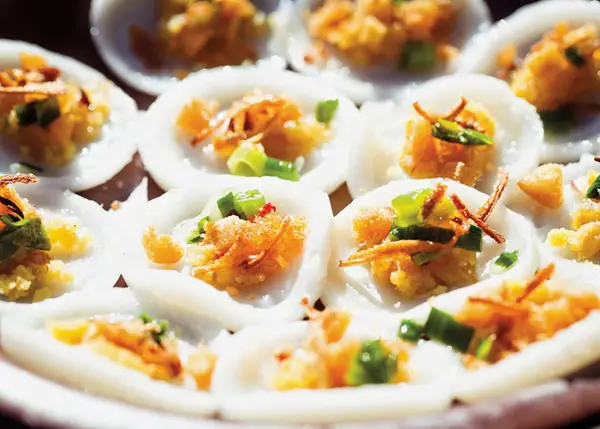
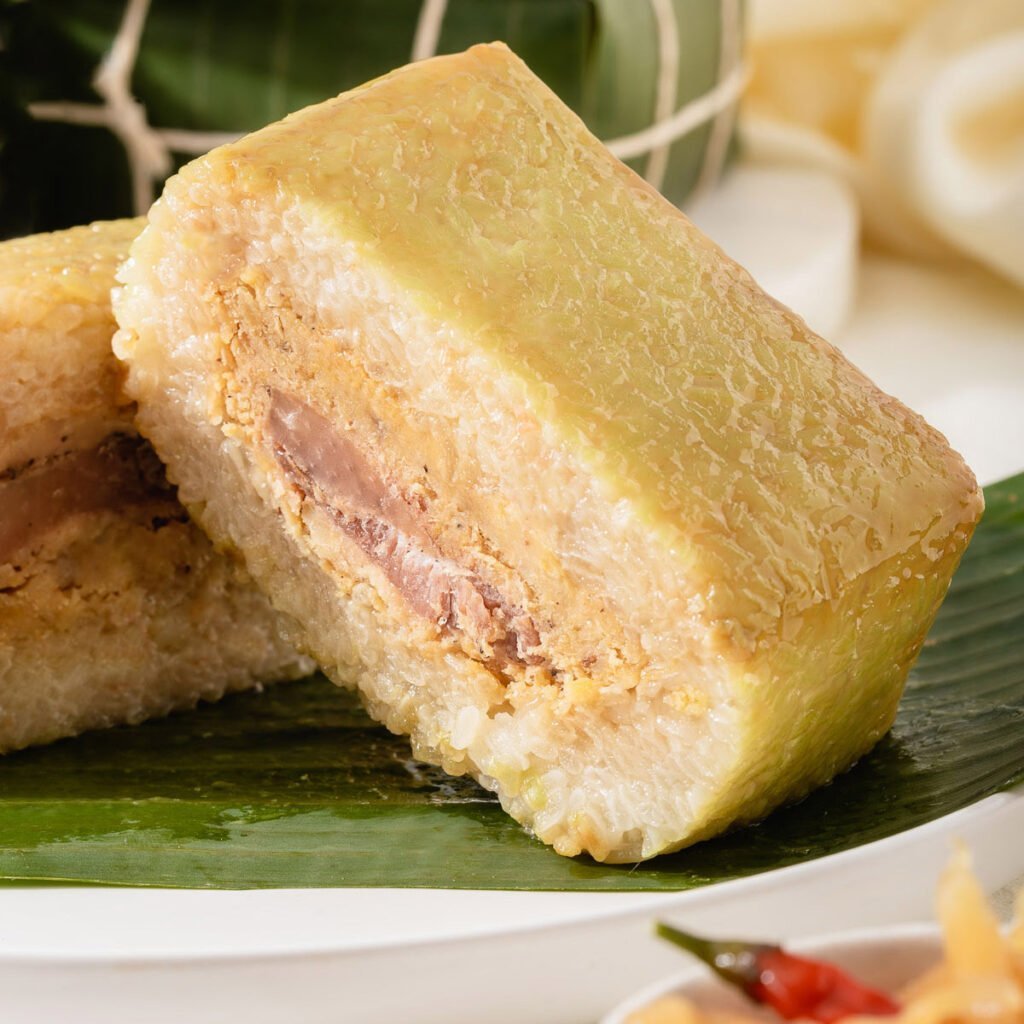
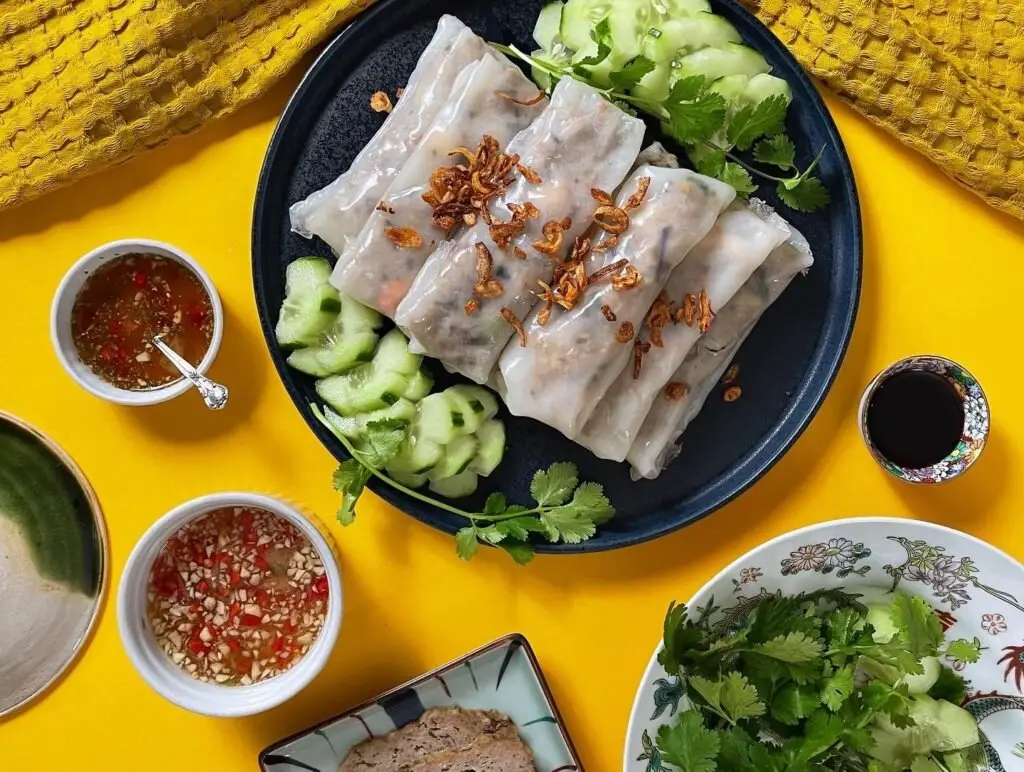

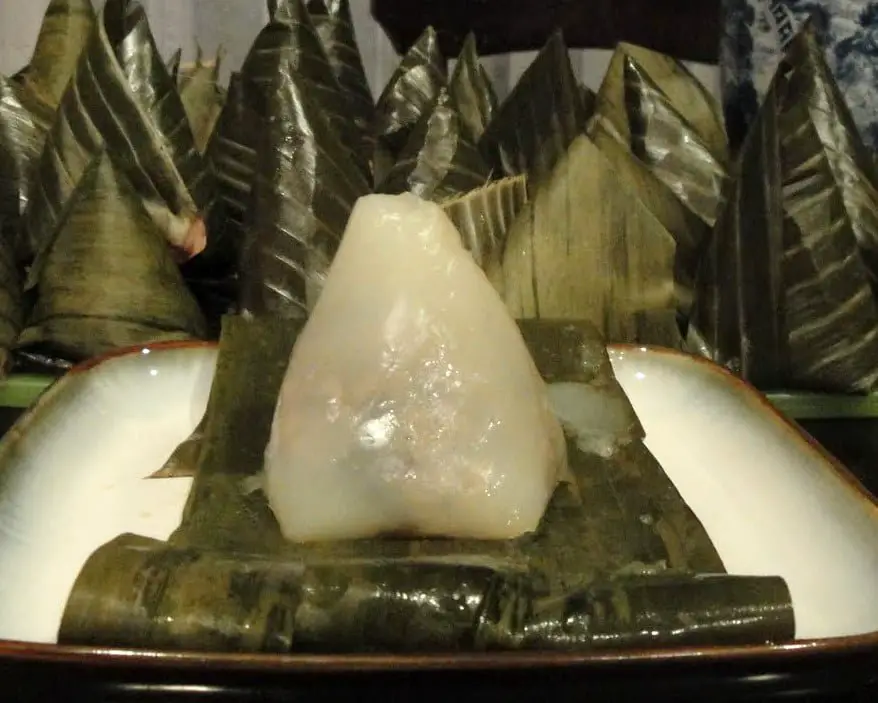
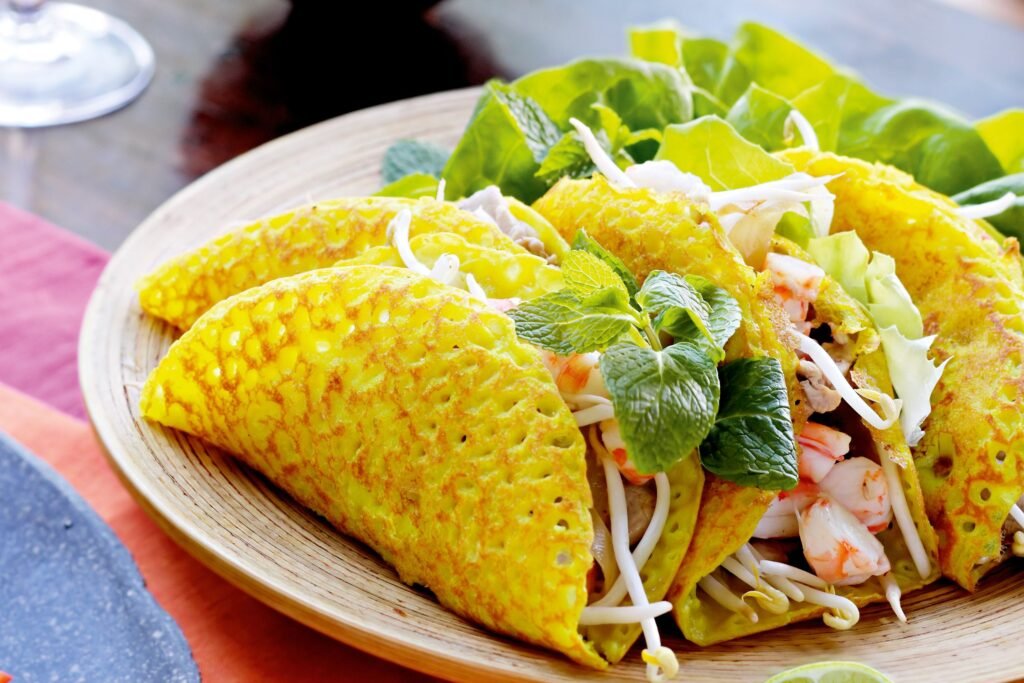
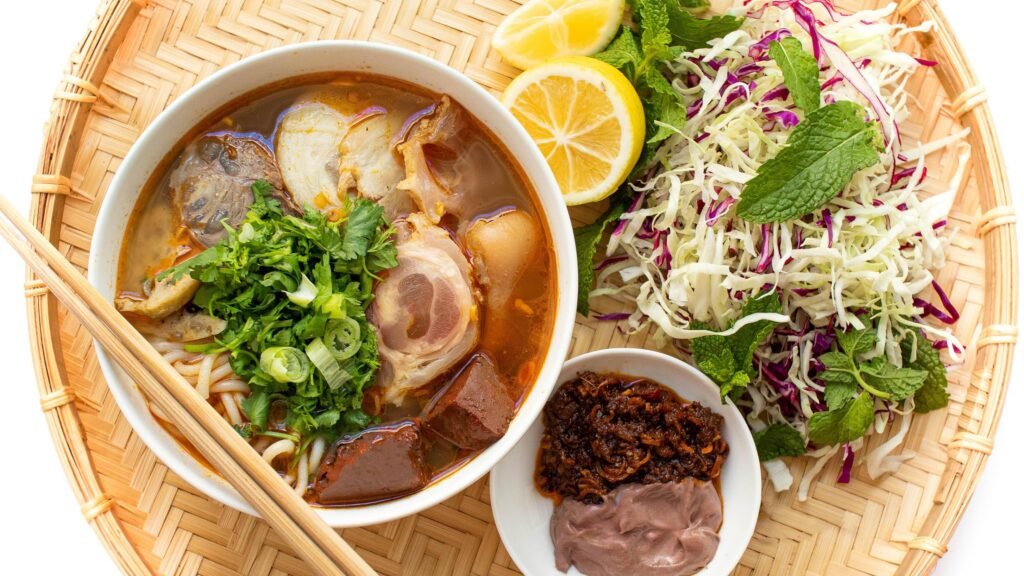
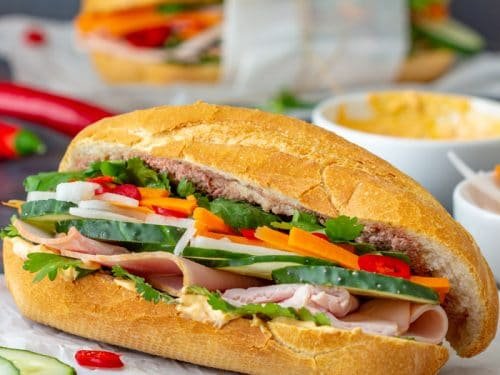
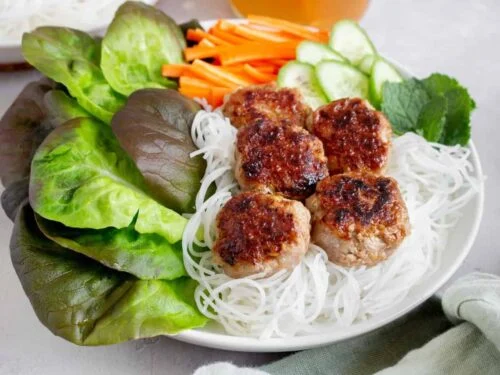
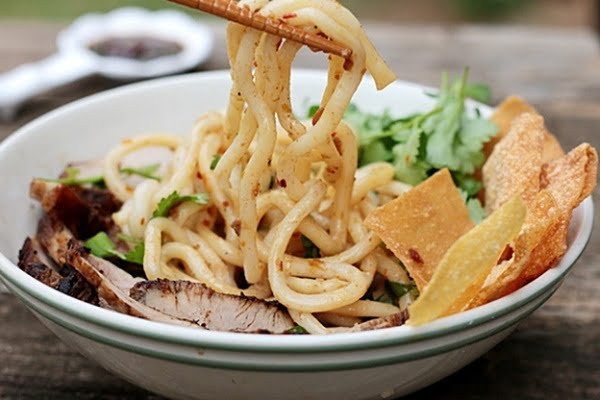
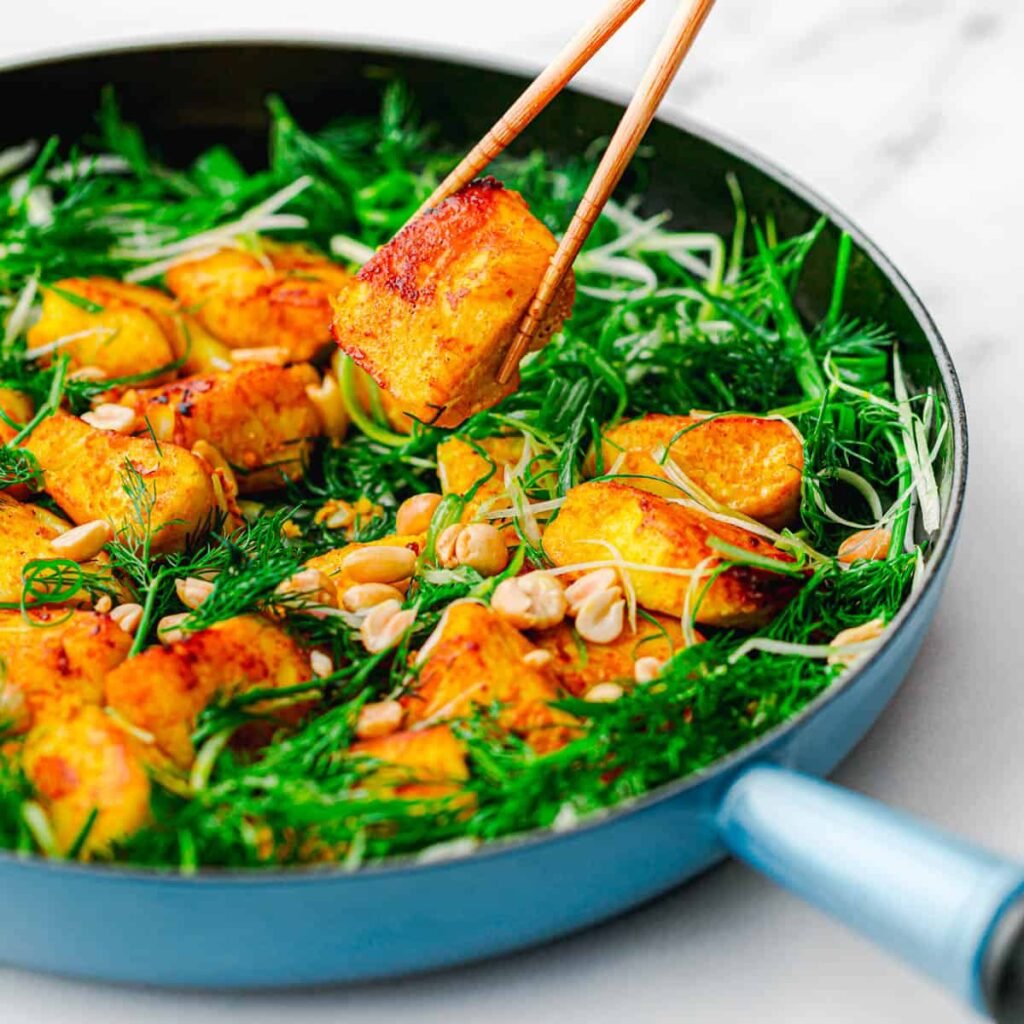


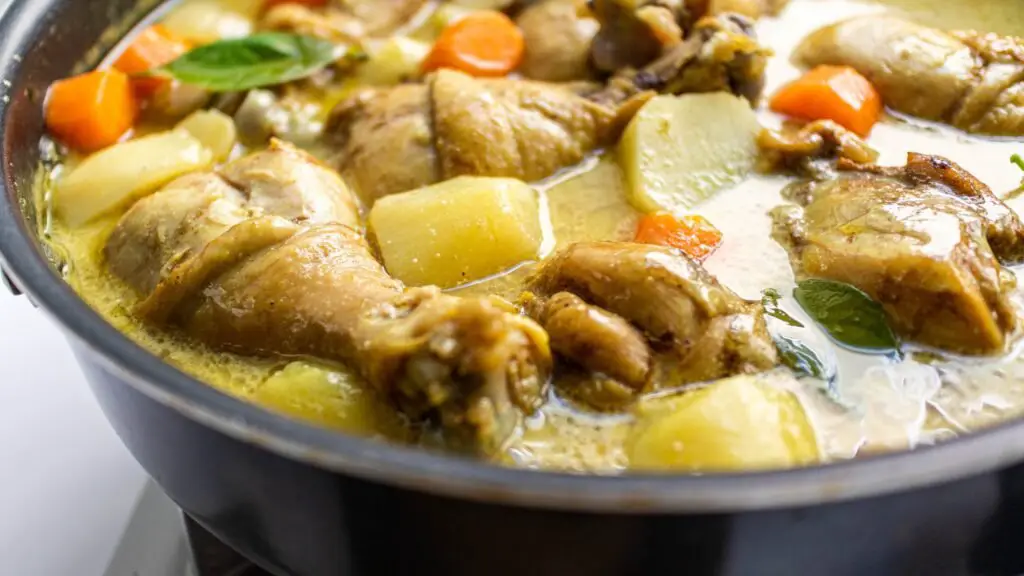


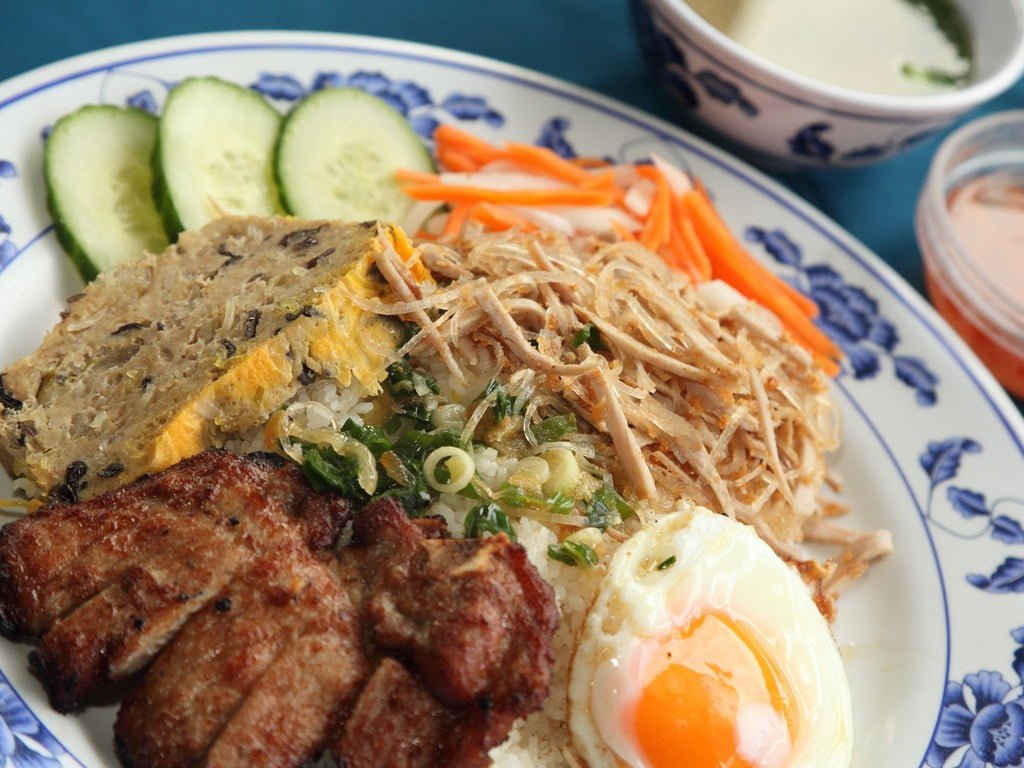

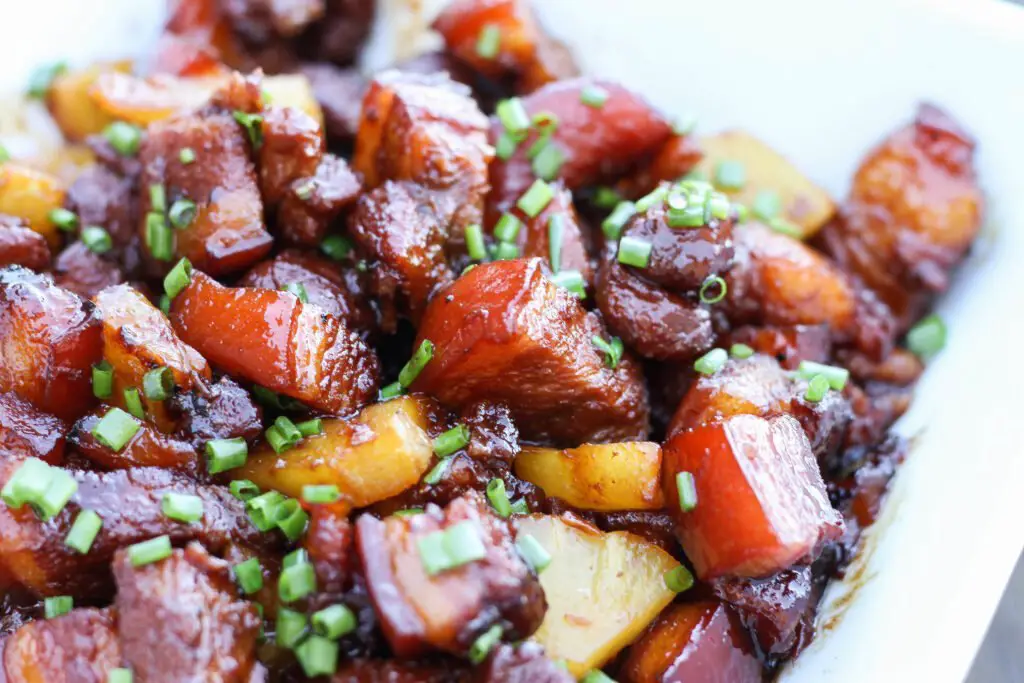
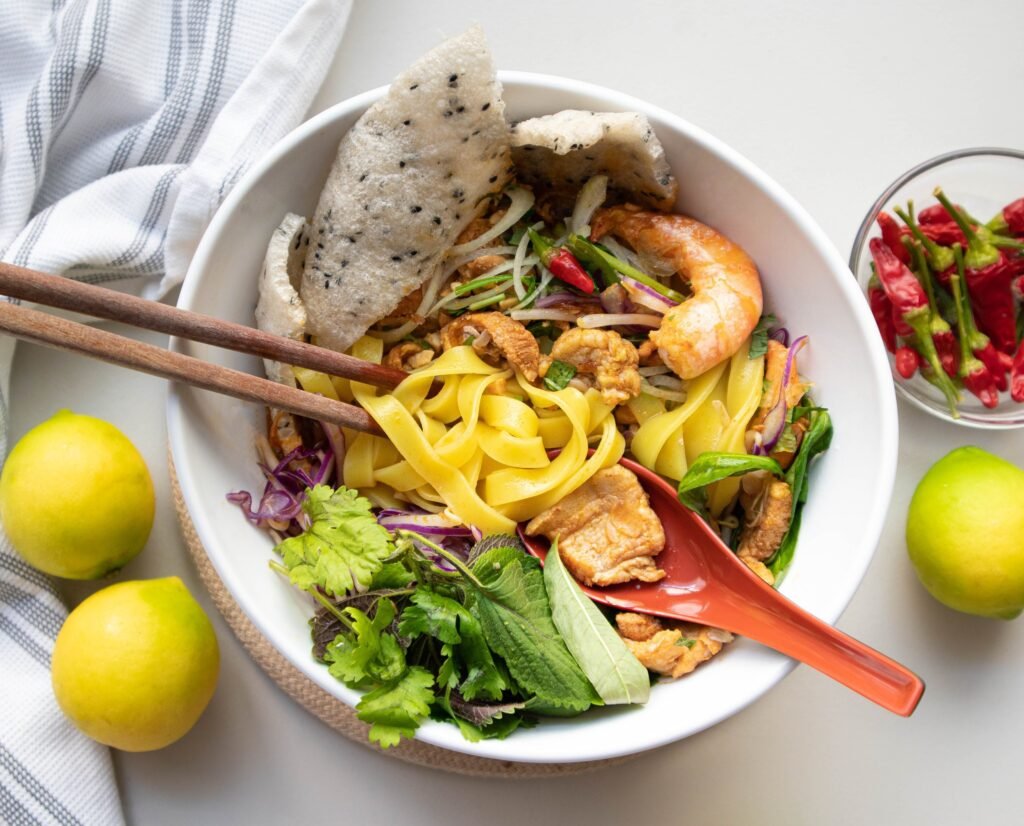

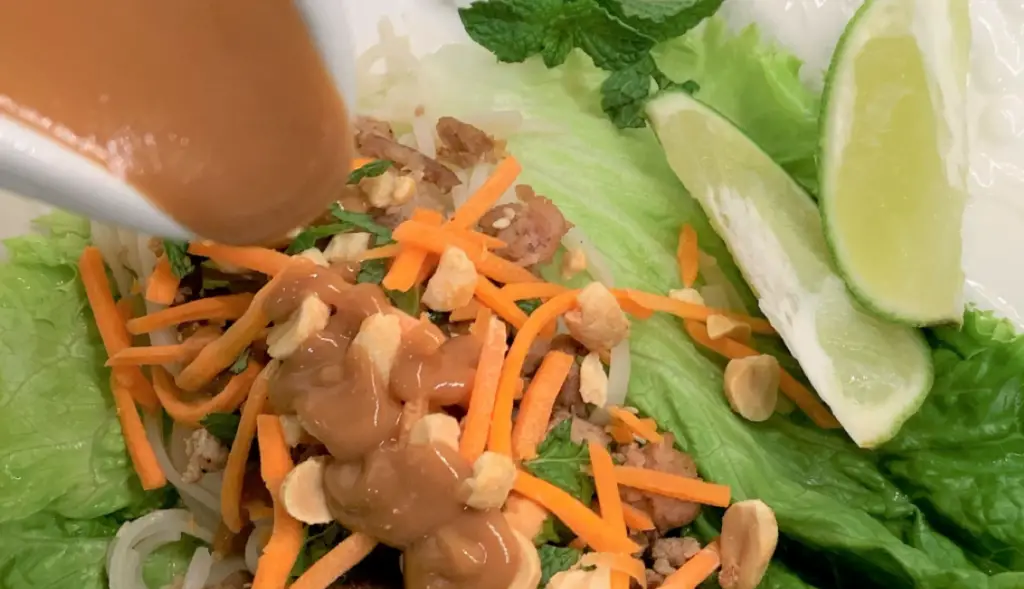
Interesting Facts about Vietnam
Motorbikes Abound

When you step into big cities like Hanoi or Ho Chi Minh for the first time, get ready for a fun fact: motorbikes are everywhere! Seriously, they’re like the cool kids at a party.
With around 92 million people in Vietnam, guess what? In 2016, there were about 45 million registered motorbikes
Vietnam is like a giant motorbike club!
Now, cars are a different story. We’ve got roughly 2 million of them cruising around. But hold onto your hat, because here’s the twist: cars are like the VIP section of transportation.
Why? Well, in Vietnam, the car tax is like a superhero entrance fee—about 200-300%! So, if you spot someone driving a car, you might be looking at a real-life superhero… or just someone with a really high car tax bill! 🚗💨
Vietnam is among the top 5 happiest countries in the world

Vietnam is like the cool kid of happiness! According to the Happy Planet Index from the UK, we snagged the 5th spot for the happiest nation worldwide and second in the Asia Pacific region back in 2016. Talk about spreading the good vibes! When you stroll around Vietnam, you’ll notice smiles all over the place. We’re like a happiness party!
And guess what? Not only are we rocking the happiness charts, but we’re also feeling super positive about the economy. A Gallup International Association survey spilled the beans, putting Vietnam in second place for economic optimism. So, not only do we know how to throw a happiness fiesta, but we’re also feeling pretty darn good about the future! 😄🎉
Free Wi-Fi Magic! 📡🌐
Guess what? Wi-Fi is like your trusty sidekick in major cities here! It’s everywhere, from coffee shops to hotels, even the cool walking streets. Getting on the internet is as easy as getting your favorite snack.
And the best part? It’s free! I🤳👍
Snow in Vietnam? Yep, you heard it right! ❄️🌴

Even though Vietnam is all about sunny days, rain, and high humidity thanks to the monsoon, there’s a special place that turns into a winter wonderland—Sa Pa! It’s this cool town in the North near China, and between December and February, the temperature drops below zero.
No snowboarding or sledding, but you can totally build snowmen, have epic snowball fights, or just watch the snowfall. Snow in a tropical country? Who would’ve thought!
Vietnam Has The World’s Biggest Cave! 🌏🦇

In Phong Nha-Ke Bang National Park, Quang Binh Province, Vietnam, there’s a colossal cave system that’s basically a whole underground world. It’s about 5.5 miles long, 650ft wide, and 500ft tall! Imagine exploring more than 150 caves, discovering giant stalagmites, prehistoric algae fields, and even cave pearls.
Some argue if it’s the biggest cave, but one thing’s for sure—it’s an explorer’s dream come true!
Cracking the Vietnamese Language Code! 🇻🇳🗣️
Vietnamese language is like a puzzle with a thousand pieces, and China had a hand in shaping it for over 1000 years. From using Chinese characters to creating their own script called chu nom and later adopting Latin alphabet with diacritics in the 17th century, it’s been a linguistic journey.
Now, here’s the tricky part—Vietnamese is tonal. Six tones make it a bit like a musical language, where a small change in tone changes the whole meaning! For example:
- Level tone (no emphasis): “ma = ghost“
- Hanging tone (grave accent): “mà = but“
- Sharp tone (acute accent): “má = mom“
- Asking tone (hook-like symbol): “mả = grave“
- Tumbling tone (tilde): “mã = horse“
- Heavy tone (point below): “mạ = baby rice plant“
Wrap your brain around that! 🤯🎤
The History of Vietnam and the Impact it has had on the Food
Vietnamese history is characterized by a series of distinct periods, each marked by significant events and changes in governance, culture, and society. The country’s rich history has had a profound impact on its cuisine, as different periods brought about new ingredients, cooking techniques, and culinary traditions. Here’s an overview of Vietnamese history and its influence on the country’s cuisine:
Prehistoric and Ancient Vietnam (Pre-2879 BCE)
This period predates recorded history, and evidence suggests the presence of ancient Vietnamese communities engaged in fishing, hunting, and rudimentary agriculture.
Cuisine during this time likely revolved around basic food sources like fish, game, and foraged plants.
Hong Bang Dynasty (2879–258 BCE)

The legendary Hong Bang Dynasty is considered the first ruling dynasty in Vietnamese history.
Agriculture and rice cultivation began to play a crucial role in the diet, shaping the foundations of Vietnamese cuisine.
Thuc Dynasty to Trieu Dynasty (c. 258 BCE–602 CE)

The period saw the Chinese influence on Vietnam, introducing Confucianism, Buddhism, and new culinary techniques.
Introduction of Staple Ingredients
Chinese culinary influence introduced staple ingredients to Vietnamese cuisine, including rice, soy sauce, and various vegetables. The cultivation and consumption of rice, in particular, became central to Vietnamese dietary practices.
Wok Cooking and Stir-Frying Techniques
Chinese cooking techniques, such as wok cooking and stir-frying, were integrated into Vietnamese culinary practices. These methods became essential for preparing quick and flavorful dishes, contributing to the development of the Vietnamese stir-fry tradition.
Noodle and Dumpling Influences
The Chinese introduced different varieties of noodles and dumplings to Vietnam. Vietnamese noodle dishes, such as pho, and dumplings, like bánh bao, bear traces of Chinese culinary influence while incorporating local ingredients and flavors.
Tea Culture and Herbal Medicine
Chinese tea culture influenced Vietnam, leading to the cultivation and consumption of tea as a daily beverage. Additionally, Chinese herbal medicine practices had an impact on Vietnamese cuisine, with certain herbs and plants becoming integral to both cooking and traditional medicine.
Dim Sum and Street Food Culture
The concept of dim sum, bite-sized portions of food often served in steamer baskets, influenced Vietnamese street food culture. Variations of dim sum, such as bánh bao and bánh gio, became popular street snacks in Vietnam.
Adoption of Cooking Styles
Vietnamese cuisine adopted certain Chinese cooking styles, such as red cooking (slow braising in soy sauce and spices), which is evident in dishes like thịt kho (caramelized pork).
Influence on Festive Foods
Chinese cultural practices, including those related to lunar new year celebrations, influenced the development of Vietnamese festive foods. Traditional dishes prepared during Tết, the Vietnamese New Year, showcase a fusion of Chinese and local culinary elements.
Culinary Techniques and Etiquette
Chinese dining etiquette and culinary techniques, such as the art of carving, presentation of dishes, and communal dining practices, influenced Vietnamese culinary traditions, particularly during special occasions and family gatherings.
In summary, the Chinese Dynasties’ occupation of Vietnam had a lasting impact on the country’s cuisine, contributing to the rich and diverse culinary heritage that Vietnam possesses today. The fusion of Chinese and Vietnamese culinary elements is evident in the use of certain ingredients, cooking techniques, and the development of iconic dishes.
Early Independence (602–938)
Vietnam gained independence from Chinese rule during this time.
The era marked the resurgence of Vietnamese identity and a reclamation of traditional culinary practices.
Dinh Dynasty to Ly Dynasty (968–1225)
Vietnamese society continued to develop, with improvements in agriculture and trade.
This period laid the foundation for the development of a sophisticated cuisine, with an emphasis on balancing flavors and incorporating herbs and spices.
Tran Dynasty to Le Dynasty (1225–1527)
The cultivation of rice and the use of rice-based products became more widespread.
The concept of “five elements” (ngũ vị) in Vietnamese cuisine, balancing flavors like sour, bitter, sweet, spicy, and salty, gained prominence.
Ming Occupation and Later Le Dynasty (1527–1789)
The Ming occupation brought more Chinese influence, impacting the Vietnamese court cuisine.
Despite the influence, efforts were made to preserve distinct Vietnamese culinary traditions.
Tay Son Rebellion and Nguyen Dynasty (1771–1802)
This period saw the rise of the Tay Son Rebellion, leading to the establishment of the Nguyen Dynasty.
Royal cuisine flourished, influencing regional dishes and culinary practices.
French Colonial Period (1858–1954)
The French Colonial Period in Vietnam, spanning from 1858 to 1954, had a profound and lasting impact on Vietnamese cuisine. The French influence significantly transformed traditional Vietnamese culinary practices, introducing new ingredients, cooking techniques, and dining styles. Here are some key aspects of the French colonial influence on Vietnamese cuisine:
Introduction of Baguettes and Pastries
One of the most visible and enduring influences is the introduction of French bread, particularly baguettes, and pastries. Vietnamese bakeries now produce a variety of French-inspired bread and pastries that have become integral to the cuisine.
Incorporation of Dairy and Butter
The French brought dairy products, including butter and cheese, which were not traditionally part of Vietnamese cuisine. These ingredients were integrated into certain dishes, contributing to a fusion of flavors.
Expansion of Coffee Culture
The French introduced coffee cultivation to Vietnam, and the coffee culture became deeply rooted. Vietnamese coffee, often brewed with condensed milk, is a popular and distinctive aspect of Vietnamese culinary heritage influenced by the French.
Development of Fusion Dishes
French culinary techniques influenced Vietnamese cooking methods, leading to the creation of fusion dishes that combined Vietnamese flavors with French culinary elements. Dishes like “Bánh mì” (French-inspired baguette sandwiches) and “Bò Kho” (beef stew) showcase this fusion.
Fine Dining Culture
The French brought a refined approach to dining, introducing the concept of fine dining and formalized meals. This influence is evident in the French-style architecture of colonial-era restaurants and the practice of serving multi-course meals.
Wine and Culinary Etiquette
Wine culture became integrated into Vietnamese dining, and the French emphasis on culinary etiquette influenced the way meals were served and enjoyed. The use of wine in cooking also became more prevalent.
Educational Impact on Culinary Arts
French colonial rule facilitated the training of Vietnamese chefs and culinary professionals in French culinary schools. This educational exchange played a crucial role in shaping the development of Vietnamese culinary arts.
Legacy in Modern Vietnamese Cuisine
Many of these French culinary influences persist in modern Vietnamese cuisine. The melding of French and Vietnamese flavors has created a diverse and unique culinary landscape that continues to evolve.
In summary, the French Colonial Period in Vietnam left an indelible mark on Vietnamese cuisine, shaping its ingredients, techniques, and dining culture. The fusion of French and Vietnamese culinary elements has given rise to a vibrant and distinctive culinary heritage that is celebrated both locally and internationally.
Japanese Occupation (1940–1945) and Post-WWII Era
The Japanese occupation further influenced Vietnamese cuisine, introducing new ingredients and cooking methods.
After World War II, Vietnam’s struggle for independence continued, shaping the nation’s identity and culinary heritage.
First Indochina War (1946–1954)
Wars significantly disrupted normal life, affecting the availability of ingredients and traditional cooking method.
Vietnam War (1955–1975)

The Vietnam War, which lasted from 1955 to 1975, had a profound impact on Vietnamese cuisine, influencing both traditional dishes and culinary practices. The war brought about significant challenges, including food scarcity and rationing, which led to innovative adaptations in cooking and resourceful use of available ingredients.
Some key impacts of the Vietnam War on cuisine include:
Adaptation to Scarcity
Due to food shortages and restrictions during the war, Vietnamese people had to adapt their recipes based on what was readily available. They became resourceful in creating flavorful dishes with limited ingredients.
Introduction of American Ingredients
The presence of American troops introduced new ingredients such as canned goods, condensed milk, and instant noodles. These items found their way into Vietnamese kitchens, influencing the evolution of certain dishes.
Pho as a Staple
Pho, a Vietnamese noodle soup, gained popularity during the war as a result of both the introduction of beef by American forces and the need for a quick, nutritious, and affordable meal for locals.
Influence of Regional Cuisine
Migration and displacement during the war contributed to the blending of regional culinary traditions. People from different parts of Vietnam came together, sharing their unique cooking styles and ingredients.
Changes in Eating Habits
The war disrupted traditional dining practices, leading to the rise of street food culture. Portable and quick meals became essential, reflecting the need for convenience during uncertain times.
Culinary Diaspora
The aftermath of the war resulted in a Vietnamese diaspora, with refugees settling in various parts of the world. This global dispersion led to the introduction of Vietnamese cuisine to different cultures and the incorporation of new influences into traditional recipes.
Overall, the Vietnam War not only impacted the availability of ingredients, and the way Vietnamese people prepared their meals but also played a role in shaping the resilience, adaptability, and global presence of Vietnamese cuisine. Today, the legacy of wartime experiences can still be seen in the diverse and dynamic nature of Vietnamese cooking.
Postwar and Reunification (1975–present)
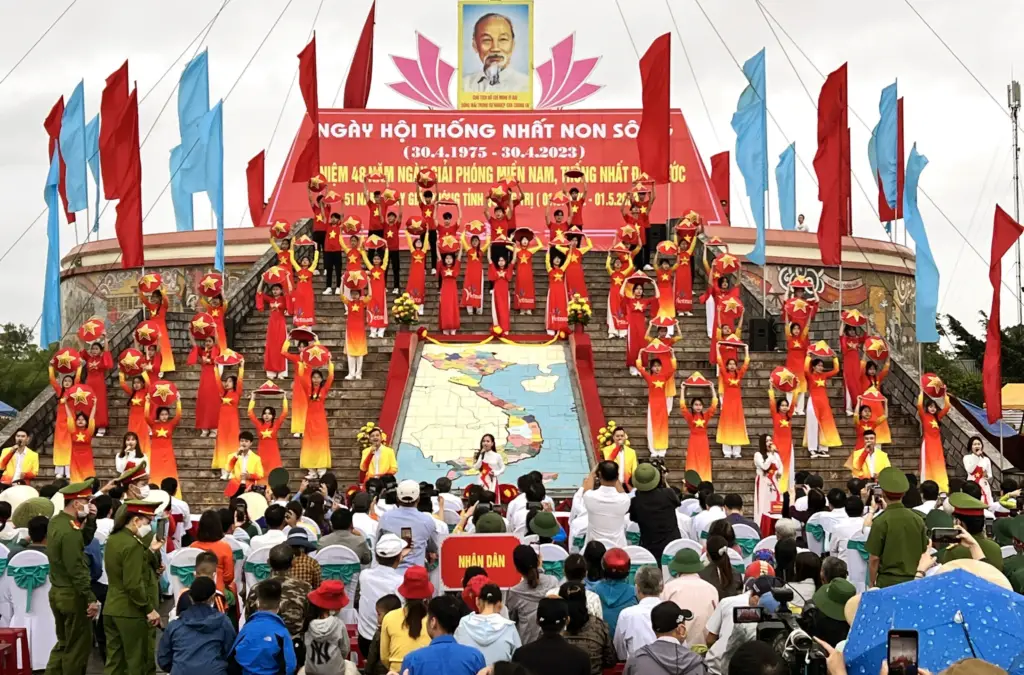
The postwar period saw efforts to rebuild and reconcile the nation.
Modern Vietnamese cuisine reflects a blend of traditional flavors with global influences, including French and Chinese culinary elements.
Throughout Vietnamese history, the cuisine has evolved in response to cultural, social, and political changes. The use of fresh herbs, aromatic spices, and a balance of flavors continues to define Vietnamese cooking, making it one of the most distinctive and beloved cuisines in the world.
How Vietnam‘s Climate and Geography has Influenced Vietnamese Cuisine
Vietnam’s climate and geography have influenced its cuisine in many ways. Vietnam is a long and narrow country that stretches from the tropics to the subtropics, with diverse landscapes of mountains, deltas, coasts, and islands.
This results in different climatic zones, agricultural products, and culinary traditions across the regions,
Some of the main influences are:
The Northern Part of Vietnam

The north has a temperate climate with four distinct seasons and less rainfall than the south. The cuisine here is more subtle and simple, relying on fresh ingredients and natural flavors. Rice is the staple food, often served with fish sauce, soy sauce, vinegar, and herbs.
Some of the dishes influenced by the Chinese are phở (noodle soup), bánh cuốn (steamed rice rolls), and chả cá (fried fish with turmeric and dill)
Vietnam’s Central Region

The central region has a hot and dry climate, with a long coastline and mountainous terrain. The cuisine here is more spicy, complex, and diverse, reflecting the rich cultural heritage of the former imperial capital Hue and the Cham people.
Rice is often cooked with spices and coconut milk, or made into noodles, cakes, and dumplings. Some of the dishes influenced by the royal and ethnic cuisines are bún bò Huế (spicy beef noodle soup), bánh bèo (steamed rice cakes), and mì Quảng (turmeric noodles with pork and shrimp)
The Southern Region
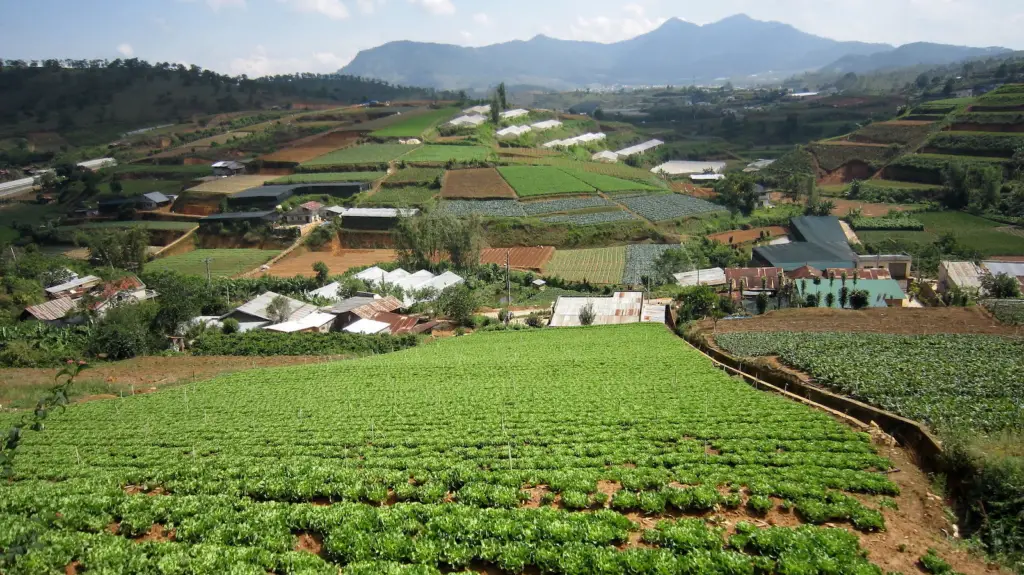
The southern part of Vietnam has a tropical climate with abundant rainfall and fertile soil. The cuisine here is more sweet, sour, and colorful, reflecting the influence of the Khmer, Thai, and French cultures. Rice is often served with a variety of meats, seafood, vegetables, and fruits.
Some of the dishes influenced by the foreign and regional cuisines are cơm tấm (broken rice with grilled pork), bánh xèo (crispy rice pancakes), and cà ri gà (chicken curry with coconut milk)
Vietnam’s cuisine is a reflection of its geography and climate, as well as its history and culture. It is a harmonious balance of the five fundamental tastes, the five elements, and the five colors, creating a unique and diverse culinary identity.
References
- countryreports.org
- en.wikipedia.org
- en.wikipedia.org
- vietnam.travel
- theplanetd.com
- worldtravelguide.net
Understanding the Essence of Vietnamese Cuisine
Vietnamese cuisine is a testament to the country’s ability to harmoniously balance flavors, textures, and ingredients, resulting in dishes that captivate the senses and nourish the soul. Rooted in ancient traditions yet open to external influences, this cuisine is both timeless and adaptive.
The essence of Vietnamese food lies in its pursuit of yin and yang; ensuring that the five elemental flavors – spicy, sour, bitter, salty, and sweet – are in perfect harmony. This philosophy translates into dishes that offer a unique play of tastes and textures: think soft rice noodles paired with crunchy vegetables, or robustly flavored meats juxtaposed with delicate herbs.
Rice, the backbone of Vietnamese cuisine, manifests in multiple forms, from the staple “cơm” (steamed rice) to “bánh mì” (bread) and “phở” (noodle soup). These rice-based dishes serve as canvases, brought to life with colorful vegetables, proteins, and herbs.

Freshness is paramount. Markets brim with fresh catches, meats, and a rainbow of produce every morning. This insistence on using fresh ingredients ensures that dishes retain their intrinsic flavors, negating the need for heavy spices or oils.
Furthermore, Vietnam’s historical interactions have enriched its culinary scene. French colonialism introduced baguettes and pastries, while neighboring China brought stir-fries and dumplings.
Yet, beyond ingredients and techniques, Vietnamese cuisine’s essence is deeply intertwined with its cultural rituals. From family members congregating to prepare “bánh chưng” during Tết (Lunar New Year) to street vendors meticulously assembling bowls of “phở” in the early morning haze, food is a conduit of memories, relationships, and national identity.
In its essence, Vietnamese cuisine is a poetic dance of flavors, a reflection of its landscapes, history, and the spirit of its people—a gastronomic journey that both comforts and surprises.
Vietnamese Culinary Traditions
Vietnam, a slender ribbon of land hugged by the South China Sea, boasts a culinary tradition rich in flavors, techniques, and cultural significance. A journey through Vietnamese cuisine reveals a fascinating interplay of history, geography, and artistry.
Central to Vietnamese dining is the philosophy of balance. Meals are a symphony of the five fundamental tastes: spicy, sour, bitter, salty, and sweet. This harmony extends to textures too, where crunchy complements soft, and creamy contrasts with tangy.

Rice reigns supreme, a staple that has shaped Vietnam’s agricultural and culinary landscape. “Cơm”, steamed rice, anchors most meals, while “bún” (rice vermicelli) and “phở” (rice noodle soup) showcase the grain’s versatility. The ubiquitous “bánh mì”, a baguette sandwich, symbolizes Vietnam’s French colonial past while being distinctly Vietnamese in flavor.
Fresh herbs and vegetables are not mere garnishes but essential components. Mint, basil, cilantro, and lemongrass elevate dishes with their aromatic presence. Meanwhile, fish sauce, a fermented elixir, imparts depth and umami to countless dishes.
Street food is a defining feature of Vietnamese culinary traditions. Bustling markets and roadside stalls serve delicacies like “gỏi cuốn” (fresh spring rolls), “bánh xèo” (sizzling pancakes), and steaming bowls of “phở”, weaving an aromatic tapestry that draws locals and travelers alike.
Seasonal and regional variations further enrich this culinary tapestry. The Lunar New Year, or “Tết”, sees families crafting “bánh chưng”, a square sticky rice cake filled with mung bean and pork, symbolizing Earth and the respect for ancestors.
From the misty mountains of Sapa to the lantern-lit streets of Hội An, Vietnam’s culinary traditions are a testament to its resilience, creativity, and reverence for nature. Every dish tells a story, capturing the soul of a nation and the heartbeats of its people.
How Healthy is Vietnamese Food?
Vietnamese cuisine is generally considered healthy due to its emphasis on fresh, locally sourced ingredients, a balance of flavors, and the inclusion of a variety of herbs and vegetables. Here are some factors contributing to the healthiness of Vietnamese food:
Rich in Vegetables and Herbs

Vietnamese dishes are often packed with a variety of fresh vegetables and herbs, providing essential vitamins, minerals, and antioxidants.
Lean Proteins
Protein sources in Vietnamese cuisine often include lean meats, seafood, and plant-based proteins, contributing to a balanced and nutritious diet.
Low in Saturated Fats
Vietnamese cooking typically uses minimal amounts of oil and focuses on healthier cooking methods, such as steaming, grilling, and stir-frying.
Balanced Flavors
Vietnamese cuisine is known for achieving a harmonious balance of flavors, incorporating sweet, salty, sour, and umami elements without relying on excessive salt or sugar.
Rice as a Staple

While rice is a staple, it is consumed in moderation and is a good source of energy. It is often complemented by a variety of proteins and vegetables.
Use of Fresh Ingredients
The emphasis on using fresh, seasonal, and local ingredients contributes to the overall nutritional value of Vietnamese dishes.
Broth-Based Soups
Pho and other Vietnamese soups are often broth-based, providing hydration and essential nutrients without excessive calories.
Incorporation of Fermented Foods
Fermented foods, such as pickled vegetables and nuoc mam (fish sauce), are common in Vietnamese cuisine, offering probiotics and promoting gut health.
It’s important to note that individual dishes may vary in terms of nutritional content, and choices such as portion size and condiment use can impact the overall healthiness of a meal.
References
- Nguyen, A. T., & Tang, H. (2006). Vietnamese Cuisine: A Form of Cultural Diplomacy. Critical Sociology, 32(4), 681–704.
- Kim, A. S., & Nguyen, B. T. (2015). Traditional Vietnamese Diet and Hepatocellular Carcinoma Risk. Nutrition and Cancer, 67(3), 343–351.
- Vietnamese Food. (n.d.). Vietnam Tourism.
The Most Popular Vietnamese Food
Vietnamese cuisine boasts a delightful array of dishes that captivate taste buds worldwide. Here are some of the most popular Vietnamese foods:
1. Pho (Phở):
- A Vietnamese noodle soup with flavorful broth, rice noodles, and a choice of beef (pho bo) or chicken (pho ga), garnished with fresh herbs and lime.
2. Banh Mi:
- A Vietnamese sandwich with a French influence, combining a crusty baguette with various fillings like grilled pork, pate, pickled vegetables, and cilantro.
3. Bun Cha:
- A Hanoi specialty featuring grilled pork patties (cha) served with vermicelli noodles (bun), fresh herbs, and a dipping sauce.
4. Goi Cuon:
- Fresh spring rolls filled with shrimp, herbs, pork, vermicelli noodles, and sometimes rice paper-wrapped, served with a tasty dipping sauce.
5. Com Tam:
- Broken rice (com tam) topped with grilled pork, shredded pork skin, and a fried egg, often accompanied by pickled vegetables.
6. Cao Lau:
- A specialty of Hoi An, Cao Lau consists of flat rice noodles, pork, greens, and croutons in a savory broth, creating a unique and flavorful dish.
7. Cha Gio:
- Vietnamese spring rolls, often deep-fried, containing a mixture of minced pork, mushrooms, and vermicelli noodles, served with dipping sauce.
8. Mi Quang:
- A central Vietnamese dish featuring turmeric-infused rice noodles, topped with pork, shrimp, herbs, peanuts, and a small amount of broth.
9. Banh Xeo:
- Vietnamese sizzling crepes filled with shrimp, pork, bean sprouts, and herbs, usually folded and eaten with rice paper.
10. Ca Kho To:
- Caramelized fish (usually catfish or tilapia) simmered in a clay pot with a rich and savory sauce made of fish sauce, sugar, and black pepper.
These dishes showcase the diversity and deliciousness of Vietnamese cuisine, blending fresh ingredients, vibrant flavors, and unique culinary techniques that make Vietnamese food a global favorite..
Vietnam Cuisine – Great recipes to try at Home
The heart of Vietnam’s culture lies in its food. Vietnam cuisine is characterized by its balance of flavors, and its foundation in fresh herbs, rice, and noodles. With a blend of sweet, salty, spicy, and sour notes, every bite promises an explosion of taste.
The following are a list of authentic and delicious recipes you can try at home.
Vietnamese Food – Bánh Chưng

History and Background of Bánh Chưng:
Bánh Chưng, a traditional Vietnamese rice cake, holds deep cultural significance and is often associated with the Lunar New Year (Tết). Its origins trace back to the legend of Lang Liêu, a prince who created this square-shaped cake as an offering to his father,
King Hùng Vương, symbolizing the earth (square) and sky (round). Bánh Chưng is typically made during Tết, symbolizing luck, prosperity, and the arrival of spring.
Vietnamese Food – Bánh Chưng Ingredients
- 2 cups glutinous rice
- 1 cup split mung beans
- 1/2 cup pork belly, cubed
- 1 tablespoon fish sauce
- 1 teaspoon black pepper
- 1 teaspoon salt
- 4 dried bamboo leaves, cleaned and softened
- Cooking twine
Vietnamese Food – Bánh Chưng Recipe
Preparing the Ingredients:
- Soak Rice and Mung Beans:
- Rinse the glutinous rice and mung beans separately. Soak them in water for at least 4 hours or overnight.
- Marinate Pork:
- Marinate the pork cubes with fish sauce, black pepper, and salt. Allow it to marinate for at least 30 minutes.
Assembling Bánh Chưng:
- Layering Bamboo Leaves:
- Clean and soften the bamboo leaves by soaking them in hot water. Lay two leaves on top of each other, forming a cross.
- Building the Layers:
- Place a portion of soaked glutinous rice in the center of the bamboo leaves. Add a layer of mung beans, followed by marinated pork cubes. Top with more rice.
- Wrapping and Tying:
- Fold the bamboo leaves to cover the ingredients, creating a square-shaped package. Secure it tightly with cooking twine.
Cooking Bánh Chưng:
- Boiling Bánh Chưng:
- Place the wrapped Bánh Chưng in a large pot of boiling water. Cook for 6-8 hours, ensuring the water level covers the cakes.
- Cooling and Slicing:
- Allow Bánh Chưng to cool before unwrapping and slicing it into servings.
Serving Information:
- Serving Size: Approximately 8-10 people
- Estimated Cooking Time: 6-8 hours
- Calories: The total calorie count varies based on specific ingredients and portions. Please refer to nutritional information on product labels for accurate details.
Bánh Chưng brings a taste of tradition to festive occasions, and its preparation is a cherished cultural practice passed down through generations.
Vietnamese Food – Bánh Cuốn (Steamed Rice Rolls)

History and Background of Bánh Cuốn:
Bánh Cuốn, a Vietnamese delicacy, has its roots in Northern Vietnam. These delicate steamed rice rolls are believed to have originated in Hanoi and are a popular breakfast or snack option.
The name “Bánh Cuốn” translates to “rolled cake,” capturing the essence of this dish, where a thin, steamed rice sheet is filled with a flavorful mixture of meat and mushrooms.
Vietnamese Food – Bánh Cuốn (Steamed Rice Rolls) Ingredients
- 1 cup rice flour
- 1 cup tapioca flour
- 3 cups water
- 1/2 teaspoon salt
- Filling:
- 200g ground pork
- 1 cup wood ear mushrooms, soaked and chopped
- 1 cup bean sprouts
- 1 tablespoon minced shallots
- 2 tablespoons fish sauce
- Ground black pepper, to taste
- Dipping sauce:
- 2 tablespoons fish sauce
- 2 tablespoons rice vinegar
- 1 tablespoon sugar
- 1/2 cup water
- Garlic, chili, and lime for additional flavor
Vietnamese Food – Bánh Cuốn (Steamed Rice Rolls) Recipe
Making the Rice Sheets:
- Creating Batter:
- In a bowl, whisk together rice flour, tapioca flour, water, and salt until you get a smooth batter.
- Steaming Rice Sheets:
- Grease a thin layer on a steaming tray. Pour a ladle of the batter onto the tray, tilting to spread it thinly. Steam for 1-2 minutes until set.
- Rolling Rice Sheets:
- Carefully roll the cooked rice sheet into a cylinder. Repeat the process for more sheets.
Preparing the Filling:
- Cooking Filling:
- In a pan, sauté minced shallots until fragrant. Add ground pork and cook until browned. Stir in chopped wood ear mushrooms, fish sauce, and pepper. Add bean sprouts last for a quick toss.
Assembling Bánh Cuốn:
- Filling Rice Sheets:
- Unroll a steamed rice sheet, add a spoonful of the filling mixture, and roll it up like a cigar.
- Steaming Assembled Rolls:
- Place the filled rolls back into the steamer for an additional 5 minutes to ensure they are thoroughly cooked.
Preparing Dipping Sauce:
- Mixing Dipping Sauce:
- Combine fish sauce, rice vinegar, sugar, and water. Adjust the flavors with minced garlic, chili, and lime according to taste.
Serving Information:
- Serving Size: Approximately 4 people
- Estimated Cooking Time: 30-45 minutes
- Calories: The total calorie count varies based on specific ingredients and portions. Please refer to nutritional information on product labels for accurate details.
Bánh Cuốn is a delightful combination of textures and flavors, showcasing the artistry of Vietnamese cuisine. These light and satisfying rice rolls, paired with a zesty dipping sauce, make for a delicious and cultural culinary experience.
Vietnamese Food – Chả Cá (Fried Fish with Turmeric and Dill)

History and Background of Chả Cá:
Chả Cá, a traditional Vietnamese dish, finds its roots in Hanoi, the capital city. Originating in the Old Quarter, this unique dish gained popularity in the 20th century.
Typically served at special family gatherings, Chả Cá features marinated fish chunks, pan-fried with turmeric and dill, resulting in a flavorful and aromatic delight.
Vietnamese Food – Chả Cá (Fried Fish with Turmeric and Dill) Ingredients
- 500g white fish fillets (catfish or basa)
- 1 tablespoon turmeric powder
- 1 tablespoon minced garlic
- 2 tablespoons fish sauce
- 1 tablespoon sugar
- 1 tablespoon vegetable oil
- Fresh dill (1 bunch)
- 1 bunch green onions, sliced
- Rice vermicelli, prepared according to package instructions
- Roasted peanuts, crushed
- Lettuce leaves
- Nuoc Cham dipping sauce (fish sauce, lime juice, sugar, garlic, and chili)
Vietnamese Food – Chả Cá (Fried Fish with Turmeric and Dill) Recipe
Preparing the Fish Marinade:
- Marinating Fish:
- Cut fish fillets into chunks. In a bowl, combine turmeric powder, minced garlic, fish sauce, sugar, and vegetable oil. Coat the fish evenly with this mixture. Let it marinate for at least 30 minutes.
Cooking Chả Cá:
- Pan-Frying Fish:
- Heat a pan over medium-high heat. Add a bit of oil. Place the marinated fish chunks in the pan and cook until golden and fragrant, approximately 5-7 minutes.
- Adding Dill and Green Onions:
- Toss in fresh dill and sliced green onions to the pan. Cook for an additional 2-3 minutes until the dill is wilted.
Assembling Chả Cá:
- Serving Accompaniments:
- Arrange prepared rice vermicelli, lettuce leaves, and crushed peanuts on a serving plate.
- Serving Chả Cá:
- Place the pan-fried fish, dill, and green onions on the plate. Let everyone assemble their wraps, combining Chả Cá with vermicelli, lettuce, and peanuts.
Serving Information:
- Serving Size: Approximately 4 people
- Estimated Cooking Time: 45 minutes (including marination)
- Calories: The total calorie count varies based on specific ingredients and portions. Please refer to nutritional information on product labels for accurate details.
Chả Cá brings a burst of Vietnamese flavors to the table, with the combination of turmeric, dill, and perfectly cooked fish. This dish provides a delicious and communal dining experience, making it a cherished part of Vietnamese culinary traditions.
Vietnamese Food – Bun Cha

History and Background of Bún Chả:
Bún Chả, a Vietnamese dish originating in Hanoi, captures the essence of Northern Vietnamese cuisine. This flavorful dish is thought to have originated in the capital’s Old Quarter. Bún Chả gained international recognition when it was enjoyed by former U.S. President Barack Obama during his visit to Vietnam in 2016.
The dish features grilled pork patties, vermicelli noodles, fresh herbs, and a dipping sauce, offering a harmonious blend of textures and flavors.
Vietnamese Food – Bun Cha Ingredients
- 500g ground pork
- 2 tablespoons fish sauce
- 1 tablespoon soy sauce
- 1 tablespoon sugar
- 1 tablespoon minced garlic
- 1 teaspoon black pepper
- 1 package rice vermicelli
- Fresh herbs (mint, cilantro, basil)
- Lettuce leaves
- Bean sprouts
- Sliced cucumbers
- 1 cup pickled carrots and daikon
- Nuoc Cham dipping sauce (fish sauce, lime juice, sugar, garlic, and chili)
Vietnamese Food – Bun Cha Recipe
Preparing the Grilled Pork Patties:
- Mixing Marinade:
- In a bowl, combine ground pork, fish sauce, soy sauce, sugar, minced garlic, and black pepper. Mix thoroughly.
- Forming Patties:
- Shape the pork mixture into small, flat patties. Ensure they are evenly sized for uniform cooking.
- Grilling Patties:
- Grill the patties on a barbecue or stovetop grill pan until fully cooked, with a slight char on the edges.
Preparing Accompaniments:
- Cooking Rice Vermicelli:
- Cook the rice vermicelli according to package instructions. Rinse under cold water and set aside.
- Prepping Fresh Herbs and Vegetables:
- Wash and prepare fresh herbs, lettuce leaves, bean sprouts, sliced cucumbers, and pickled carrots and daikon.
Assembling Bún Chả Bowls:
- Arranging Ingredients:
- Divide cooked rice vermicelli among serving bowls. Add grilled pork patties, fresh herbs, lettuce, bean sprouts, cucumbers, and pickled vegetables.
- Serving with Nuoc Cham:
- Drizzle Nuoc Cham dipping sauce over the assembled Bún Chả bowls. Toss the ingredients together for a flavorful combination.
Serving Information:
- Serving Size: Approximately 4 people
- Estimated Cooking Time: 30-45 minutes (including marination)
- Calories: The total calorie count varies based on specific ingredients and portions. Please refer to nutritional information on product labels for accurate details.
Bún Chả offers a delicious medley of tastes, showcasing the vibrant and fresh components of Vietnamese cuisine. Whether enjoyed as a communal meal or a quick bite, this dish encapsulates the heartiness and diversity of Northern Vietnamese flavors.
Vietnamese Food – Cao Lau

History and Background of Cao Lau:
Cao Lau is a unique Vietnamese dish believed to have originated in the town of Hoi An, Quang Nam Province. This regional specialty dates back centuries, with its distinct flavors and textures influenced by Chinese, Japanese, and local Vietnamese culinary traditions.
Cao Lau features thick rice noodles, tender pork, crispy pork cracklings, fresh herbs, and a savory broth, creating a dish that reflects the rich history and cultural amalgamation of Hoi An.
Vietnamese Food – Cao Lau Ingredients
- 250g thick rice noodles
- 200g pork loin, thinly sliced
- 100g pork belly, sliced into thin strips
- 2 tablespoons vegetable oil
- 1 tablespoon minced garlic
- 1 tablespoon soy sauce
- 1 tablespoon oyster sauce
- 1 teaspoon sugar
- 1/2 teaspoon five-spice powder
- 1 cup bean sprouts
- Fresh herbs (mint, cilantro, basil)
- Green onions, chopped
- Crispy pork cracklings
- Lime wedges
- Fish sauce, chili, and garlic for condiments
Vietnamese Food – Cao Lau Recipe
Preparing Cao Lau Noodles:
- Cooking Rice Noodles:
- Cook the thick rice noodles according to package instructions. Rinse under cold water and set aside.
Cooking Pork and Assembly:
- Sautéing Pork:
- In a pan, heat vegetable oil and sauté minced garlic until fragrant. Add pork loin and pork belly slices. Cook until pork is browned.
- Seasoning Pork:
- Season the pork with soy sauce, oyster sauce, sugar, and five-spice powder. Stir well and let it simmer until fully cooked.
- Assembling Cao Lau Bowls:
- Divide the cooked rice noodles among serving bowls. Top with the sautéed pork, bean sprouts, fresh herbs, green onions, and crispy pork cracklings.
Serving and Condiments:
- Adding Condiments:
- Serve Cao Lau with lime wedges, fish sauce, chili, and garlic on the side. Diners can customize their bowls with these condiments.
Serving Information:
- Serving Size: Approximately 4 people
- Estimated Cooking Time: 30-45 minutes
- Calories: The total calorie count varies based on specific ingredients and portions. Please refer to nutritional information on product labels for accurate details.
Cao Lau embodies the distinct flavors of Hoi An, blending local ingredients with historical influences. This dish not only satisfies the taste buds but also serves as a culinary journey through the cultural tapestry of this charming Vietnamese town.
Vietnamese Food – Bún Bò Huế (Spicy Beef Noodle Soup)

History and Background of Bún Bò Huế:
Bún Bò Huế, a Vietnamese soup hailing from the city of Huế, is known for its bold and spicy flavors. Originating in Central Vietnam, Bún Bò Huế is believed to have royal roots, with its name paying homage to the imperial city.
This dish showcases a unique blend of lemongrass, spicy chili, and beef, creating a hearty and aromatic noodle soup that has become a favorite across Vietnam.
Vietnamese Food – Bún Bò Huế Ingredients
- 500g beef shank, thinly sliced
- 300g pork hocks or pig’s feet
- 200g beef brisket, thinly sliced
- 200g Vietnamese pork sausage (chả lụa), sliced
- 200g pork blood pudding (tiết), sliced (optional)
- 1 package round rice vermicelli noodles
- 1 onion, thinly sliced
- 2 stalks lemongrass, bruised
- 3 tablespoons fish sauce
- 2 tablespoons shrimp paste (mắm ruốc)
- 2 tablespoons sugar
- 1 tablespoon chili oil
- 1 tablespoon minced garlic
- 1 tablespoon annatto seeds (hạt điều màu) for color
- Fresh herbs (mint, basil, cilantro)
- Bean sprouts and lime wedges for serving
Vietnamese Food – Bún Bò Huế Recipe
Preparing Broth and Meat:
- Simmering Pork Hocks:
- In a large pot, simmer pork hocks or pig’s feet until tender, skimming off impurities. Remove and slice the meat.
- Cooking Beef and Pork Sausage:
- In the same pot, cook beef shank, beef brisket, and pork sausage. Once cooked, slice the beef thinly.
Making Spicy Broth:
- Infusing Flavor:
- In a separate pan, sauté minced garlic, shrimp paste, and annatto seeds. Add this mixture to the pot with lemongrass, fish sauce, sugar, and chili oil. Allow it to simmer.
- Balancing Flavors:
- Adjust the broth’s flavor by adding more fish sauce, sugar, or chili oil if needed. The broth should have a spicy, savory, and slightly sweet taste.
Preparing Noodles and Assembling Bowls:
- Cooking Rice Vermicelli:
- Cook the rice vermicelli according to package instructions. Rinse under cold water.
- Assembling Bún Bò Huế Bowls:
- Divide the cooked noodles among serving bowls. Top with sliced beef, pork hocks, pork sausage, and pork blood pudding (if using).
Serving Information:
- Serving Size: Approximately 4 people
- Estimated Cooking Time: 2-3 hours
- Calories: The total calorie count varies based on specific ingredients and portions. Please refer to nutritional information on product labels for accurate details.
Bún Bò Huế stands as a spicy and flavorful representation of the vibrant cuisine found in Central Vietnam. As a comforting and aromatic noodle soup, it continues to captivate palates with its robust taste and historical significance.
Vietnamese Food – Bánh Bèo (Steamed Rice Cakes)

History and Background of Bánh Bèo:
Bánh Bèo, originating from the central regions of Vietnam, particularly in Hue, holds a special place in Vietnamese cuisine. These small, round steamed rice cakes are a culinary reflection of the region’s rich history and cultural influences.
The name “Bánh Bèo” translates to “water fern cake,” drawing inspiration from their round, floating appearance resembling water fern leaves.
Vietnamese Food – Bánh Bèo Ingredients
- 1 cup rice flour
- 1/2 cup tapioca starch
- 4 cups water
- 1 teaspoon salt
- 1 cup dried shrimp, soaked and minced
- 1 cup mung bean paste
- Green onions, thinly sliced
- Fried shallots for topping
- Fish sauce, diluted with water for dipping
Vietnamese Food – Bánh Bèo Recipe
Making Rice Batter:
- Mixing Rice Batter:
- In a bowl, combine rice flour, tapioca starch, water, and salt. Stir until the mixture forms a smooth batter.
- Steaming Batter:
- Grease small molds or saucers and pour a thin layer of the batter into each. Steam for 10-15 minutes until the cakes are set.
Preparing Toppings:
- Cooking Dried Shrimp:
- Soak dried shrimp in warm water, then mince. Sauté the minced shrimp until fragrant.
- Prepping Mung Bean Paste:
- Steam or cook mung beans until soft. Mash or blend to form a paste.
Assembling Bánh Bèo:
- Assembling Toppings:
- Once the rice cakes are steamed, top each with a layer of mung bean paste and minced dried shrimp.
- Finishing Touch:
- Garnish with thinly sliced green onions and fried shallots.
Serving Information:
- Serving Size: Approximately 4 people
- Estimated Cooking Time: 30-45 minutes
- Calories: The total calorie count varies based on specific ingredients and portions. Please refer to nutritional information on product labels for accurate details.
Bánh Bèo offers a delightful experience with its soft texture, savory toppings, and the unique contrast of flavors. As a popular dish in Central Vietnam, it reflects the culinary ingenuity and cultural significance of the region, making it a cherished part of Vietnamese gastronomy.
Vietnamese Food – Mì Quảng (Turmeric Noodles with Pork and Shrimp)

History and Background of Mì Quảng:
Mì Quảng, a beloved Vietnamese dish, originates from Quang Nam Province in Central Vietnam. Named after the province, this flavorful dish showcases a harmonious blend of fresh herbs, protein, and turmeric-infused noodles.
Traditionally enjoyed as a communal meal, Mì Quảng represents the regional diversity and culinary creativity of Central Vietnam.
Vietnamese Food – Mì Quảng Ingredients
- 250g rice noodles
- 200g shrimp, peeled and deveined
- 200g pork belly, thinly sliced
- 2 boiled eggs, halved
- 1 cup bean sprouts
- 1 cucumber, julienned
- Fresh herbs (mint, basil, cilantro)
- 2 tablespoons vegetable oil
- 1 tablespoon minced garlic
- 1 tablespoon turmeric powder
- 1 tablespoon fish sauce
- 1 teaspoon sugar
- Salt and pepper to taste
- Roasted peanuts for topping
Vietnamese Food – Mì Quảng Recipe
Preparing Noodles and Protein:
- Cooking Rice Noodles:
- Cook the rice noodles according to package instructions. Rinse under cold water and set aside.
- Sautéing Pork and Shrimp:
- In a pan, heat vegetable oil. Sauté minced garlic until fragrant. Add sliced pork belly and shrimp, cooking until the pork is browned and the shrimp turns pink.
Infusing Turmeric Flavor:
- Adding Turmeric Powder:
- Sprinkle turmeric powder over the meat and shrimp. Mix well to coat evenly.
- Balancing Flavors:
- Season with fish sauce, sugar, salt, and pepper. Adjust the flavors to achieve a savory and slightly sweet taste.
Assembling Mì Quảng Bowls:
- Arranging Ingredients:
- In serving bowls, assemble the rice noodles, sautéed pork, shrimp, boiled eggs, bean sprouts, cucumber, and fresh herbs.
- Pouring Broth:
- Ladle a small amount of broth (made from the shrimp shells and pork) over the assembled ingredients. The broth should be flavorful but not drown the noodles.
Serving Information:
- Serving Size: Approximately 4 people
- Estimated Cooking Time: 30-45 minutes
- Calories: The total calorie count varies based on specific ingredients and portions. Please refer to nutritional information on product labels for accurate details.
Mì Quảng, with its vibrant colors and aromatic flavors, represents the culinary ingenuity of Central Vietnam. As a delightful and nourishing dish, it invites people to come together and savor the diverse tastes that characterize Vietnamese cuisine.
Vietnamese Food – Bánh Gio

History and Background of Bánh Gio:
Bánh Gio, a traditional Vietnamese dish, has its roots deeply embedded in the country’s culinary heritage. Originating in northern Vietnam, Bánh Gio represents a popular snack enjoyed across the region.
These pyramid-shaped dumplings are made from a mixture of rice flour, tapioca starch, and filled with a savory mixture of minced pork and wood ear mushrooms, creating a delectable treat that reflects the rich tapestry of Vietnamese street food.
Vietnamese Food – Bánh Gio Ingredients
- Dough:
- 2 cups rice flour
- 1 cup tapioca starch
- 3 cups water
- 1 teaspoon salt
- Banana leaves or parchment paper for wrapping
- Filling:
- 200g ground pork
- 1 cup wood ear mushrooms, soaked and finely chopped
- 1/2 cup vermicelli noodles, soaked and cut into small pieces
- 1/4 cup minced shallots
- 1/4 cup minced garlic
- 2 tablespoons fish sauce
- 1 tablespoon vegetable oil
- Salt and pepper to taste
Vietnamese Food – Bánh Gio Recipe
Making the Dough:
- Preparing Dough Mixture:
- In a large bowl, combine rice flour, tapioca starch, water, and salt. Mix until a smooth batter forms.
- Steaming the Dough:
- Grease small bowls or molds and fill them with the rice flour mixture. Steam for about 15-20 minutes until the dough sets.
Preparing the Filling:
- Cooking Filling Mixture:
- In a pan, heat vegetable oil. Sauté minced shallots and garlic until fragrant. Add ground pork, wood ear mushrooms, and vermicelli noodles. Cook until the pork is browned.
- Seasoning the Filling:
- Season the mixture with fish sauce, salt, and pepper. Stir well to ensure even flavor distribution.
Assembling Bánh Gio:
- Wrapping the Dumplings:
- Take a portion of the steamed dough, flatten it, and add a spoonful of the pork filling in the center. Fold the edges to form a pyramid shape, securing it with banana leaves or parchment paper.
Serving Information:
- Serving Size: Approximately 6 people
- Estimated Cooking Time: 45-60 minutes
- Calories: The total calorie count varies based on specific ingredients and portions. Please refer to nutritional information on product labels for accurate details.
Bánh Gio stands as a testament to the creativity and diversity of Vietnamese street food. Whether enjoyed as a snack or light meal, these pyramid dumplings showcase the meticulous craftsmanship and delicious flavors that define the culinary landscape of northern Vietnam.
Vietnamese Food – Cơm Tấm (Broken Rice with Grilled Pork)

History and Background of Cơm Tấm:
Cơm Tấm, a staple in Vietnamese cuisine, traces its roots to the southern regions of Vietnam. Historically, Cơm Tấm originated as a thrifty way of utilizing broken rice grains, which were considered lower in quality. Over time, it evolved into a beloved dish with grilled pork as the central element.
Today, Cơm Tấm represents a flavorful and iconic street food dish that showcases the resourcefulness and creativity of Vietnamese culinary traditions.
Vietnamese Food – Cơm Tấm (Broken Rice with Grilled Pork) Ingredients
- For Grilled Pork:
- 500g pork shoulder, thinly sliced
- 3 tablespoons soy sauce
- 2 tablespoons fish sauce
- 2 tablespoons honey
- 1 tablespoon minced garlic
- 1 tablespoon vegetable oil
- Pepper to taste
- For Nuoc Mam Cham (Fish Sauce Dressing):
- 1/4 cup fish sauce
- 1/4 cup water
- 2 tablespoons sugar
- 2 tablespoons lime juice
- 1 clove garlic, minced
- 1 small chili, minced (optional)
- For Accompaniments:
- Cơm Tấm (broken rice)
- Pickled vegetables (carrots, daikon)
- Sliced cucumber
- Fresh herbs (mint, basil, cilantro)
- Crushed peanuts for garnish
- Fried shallots for topping
Vietnamese Food – Cơm Tấm (Broken Rice with Grilled Pork) Recipe
Grilling Pork:
- Marinating Pork:
- In a bowl, combine soy sauce, fish sauce, honey, minced garlic, vegetable oil, and pepper. Marinate the pork slices for at least 30 minutes.
- Grilling Pork:
- Grill the marinated pork slices until they are cooked through and have a caramelized exterior.
Making Nuoc Mam Cham:
- Preparing Fish Sauce Dressing:
- In a bowl, mix fish sauce, water, sugar, lime juice, minced garlic, and minced chili (if using). Stir until the sugar dissolves.
Assembling Cơm Tấm Bowls:
- Arranging Components:
- Serve a portion of broken rice alongside grilled pork slices. Arrange pickled vegetables, sliced cucumber, and fresh herbs on the side.
- Adding Dressing:
- Drizzle Nuoc Mam Cham over the rice and pork. Garnish with crushed peanuts and fried shallots.
Serving Information:
- Serving Size: Approximately 4 people
- Estimated Cooking Time: 30-45 minutes
- Calories: The total calorie count varies based on specific ingredients and portions. Please refer to nutritional information on product labels for accurate details.
Cơm Tấm with Grilled Pork encapsulates the vibrant flavors of Southern Vietnamese cuisine. Its combination of savory grilled pork, fragrant broken rice, and zesty fish sauce dressing creates a delicious and satisfying meal that is enjoyed by many in the bustling streets of Vietnam.
Vietnamese Food – Bánh Xèo (Crispy Rice Pancakes)

History and Background of Bánh Xèo:
Bánh Xèo, a delightful Vietnamese dish, has its roots in Southern Vietnam and translates to “sizzling pancake.” With a history dating back centuries, Bánh Xèo has become a beloved street food known for its crispy and golden exterior.
The name “sizzling pancake” reflects the enticing sound the batter makes when poured onto a hot skillet. This dish showcases the influence of French and Chinese culinary elements, resulting in a unique and flavorful Vietnamese creation.
Vietnamese Food – Bánh Xèo Ingredients
- Batter:
- 1 cup rice flour
- 1 cup coconut milk
- 1 cup water
- 1/2 teaspoon turmeric powder
- 1/2 teaspoon salt
- 1/2 teaspoon sugar
- Filling:
- 200g pork belly, thinly sliced
- 200g shrimp, peeled and deveined
- 1 onion, thinly sliced
- Bean sprouts
- Fresh herbs (mint, basil)
- Lettuce leaves for wrapping
- Dipping Sauce:
- 3 tablespoons fish sauce
- 2 tablespoons water
- 1 tablespoon sugar
- 1 tablespoon lime juice
- 1 clove garlic, minced
- 1 small chili, minced
Vietnamese Food – Bánh Xèo Recipe
Making Batter:
- Preparing Batter Mixture:
- In a bowl, whisk together rice flour, coconut milk, water, turmeric powder, salt, and sugar. Let the batter rest for at least 30 minutes.
Preparing Filling:
- Cooking Pork and Shrimp:
- In a pan, cook thinly sliced pork belly and shrimp until they are fully cooked.
- Sautéing Vegetables:
- Sauté sliced onions until they are soft. Add bean sprouts and cook briefly.
Cooking Bánh Xèo:
- Pouring Batter:
- Heat a non-stick skillet, add a bit of oil, and pour a ladle of batter, swirling to coat the pan evenly.
- Adding Filling:
- Add cooked pork, shrimp, and sautéed vegetables to one side of the pancake. Fold the pancake in half.
- Cooking Until Crispy:
- Cook until the edges are crispy and golden brown. Repeat for additional pancakes.
Making Dipping Sauce:
- Preparing Fish Sauce Dip:
- Mix fish sauce, water, sugar, lime juice, minced garlic, and minced chili to create the dipping sauce.
Serving Information:
- Serving Size: Approximately 4 people
- Estimated Cooking Time: 45-60 minutes
- Calories: The total calorie count varies based on specific ingredients and portions. Please refer to nutritional information on product labels for accurate details.
Bánh Xèo offers a delightful combination of textures and flavors, making it a favorite among Vietnamese street food enthusiasts. The crispy rice pancake, paired with a flavorful filling and a tangy dipping sauce, creates a satisfying dish that embodies the culinary diversity of Southern Vietnam.
Vietnamese Food – Cà Ri Gà (Chicken Curry with Coconut Milk)

History and Background of Cà Ri Gà:
Cà Ri Gà, a Vietnamese Chicken Curry with Coconut Milk, reflects the influence of Indian and Southeast Asian culinary traditions on Vietnamese cuisine. Introduced during the French colonial period, this dish has become a flavorful and comforting staple.
The combination of aromatic spices, creamy coconut milk, and tender chicken creates a unique culinary experience that highlights Vietnam’s diverse and evolving food culture.
Vietnamese Food – Cà Ri Gà Ingredients
- Curry Paste:
- 2 shallots, chopped
- 3 cloves garlic, minced
- 1 thumb-sized ginger, minced
- 1 tablespoon lemongrass, minced
- 1 tablespoon curry powder
- 1 teaspoon turmeric powder
- 1 teaspoon chili powder (adjust to taste)
- 2 tablespoons vegetable oil
- Curry:
- 500g chicken, cut into bite-sized pieces
- 1 can (400ml) coconut milk
- 2 potatoes, peeled and diced
- 2 carrots, peeled and sliced
- 1 onion, sliced
- 1 bell pepper, sliced
- 1 tablespoon fish sauce
- 1 tablespoon sugar
- Salt and pepper to taste
- Fresh cilantro for garnish
Vietnamese Food – Cà Ri Gà Recipe
Making Curry Paste:
- Sautéing Aromatics:
- In a pan, heat vegetable oil. Sauté shallots, garlic, ginger, and lemongrass until fragrant.
- Creating Paste:
- Add curry powder, turmeric powder, and chili powder. Mix well to form a smooth curry paste.
Cooking Cà Ri Gà:
- Cooking Chicken:
- In a pot, cook the chicken in the curry paste until the chicken is browned.
- Adding Vegetables:
- Pour in coconut milk, add potatoes, carrots, onion, and bell pepper. Simmer until the vegetables are tender.
- Seasoning:
- Season the curry with fish sauce, sugar, salt, and pepper. Adjust the flavors to achieve a balance of sweetness, saltiness, and spiciness.
- Simmering:
- Let the curry simmer on low heat for about 20-30 minutes, allowing the flavors to meld.
Serving Information:
- Serving Size: Approximately 4 people
- Estimated Cooking Time: 60 minutes
- Calories: The total calorie count varies based on specific ingredients and portions. Please refer to nutritional information on product labels for accurate details.
Cà Ri Gà, a comforting and aromatic dish, reflects the fusion of global influences in Vietnamese culinary history. With its rich and creamy texture, this Chicken Curry with Coconut Milk has become a cherished part of Vietnamese home-cooked meals, bringing warmth and flavor to dining tables across the country.
Vietnamese Food – Bánh Mì (A Baguette Sandwich

History and Background of Bánh Mì:
Bánh Mì, a Vietnamese baguette sandwich, has a fascinating history shaped by French colonization and local innovations. Originating in the streets of Saigon, this delightful fusion of French and Vietnamese culinary elements became popular during the 20th century.
Bánh Mì typically features a crispy baguette filled with a diverse range of ingredients, reflecting the dynamic flavors of Vietnamese cuisine.
Vietnamese Food – Bánh Mì (A Baguette Sandwich Ingredients
- Baguette:
- 4 Vietnamese baguettes or French baguettes
- Protein (Choose One or Mix):
- 200g pork belly, thinly sliced
- 200g chicken, grilled and shredded
- 200g tofu, sliced and pan-fried
- Pickled Vegetables:
- 1 carrot, julienned
- 1 daikon radish, julienned
- 1/2 cup rice vinegar
- 2 tablespoons sugar
- 1 teaspoon salt
- Condiments and Toppings:
- Fresh cilantro
- Sliced cucumber
- Sliced chili (optional)
- Mayonnaise or pâté
- Soy sauce or Maggi seasoning
Vietnamese Food – Bánh Mì (A Baguette Sandwich Recipe
Making Pickled Vegetables:
- Preparing Pickling Liquid:
- Mix rice vinegar, sugar, and salt in a bowl until the sugar dissolves.
- Pickling Vegetables:
- Combine julienned carrot and daikon radish in the pickling liquid. Let it marinate for at least 30 minutes.
Assembling Bánh Mì:
- Prepping Baguette:
- Slice the baguette lengthwise, creating a pocket for fillings.
- Adding Protein:
- Choose your protein (pork belly, chicken, tofu) and place it inside the baguette.
- Layering Vegetables:
- Add pickled vegetables, sliced cucumber, and fresh cilantro on top of the protein.
- Adding Condiments:
- Spread mayonnaise or pâté inside the baguette. Optionally, drizzle soy sauce or Maggi seasoning for extra flavor.
- Optional Spice:
- Add sliced chili if you prefer a spicy kick.
Serving Information:
- Serving Size: Approximately 4 people
- Estimated Cooking Time: 30-45 minutes
- Calories: The total calorie count varies based on specific ingredients and portions. Please refer to nutritional information on product labels for accurate details.
Bánh Mì, a symbol of culinary fusion, showcases the vibrant and diverse flavors of Vietnamese street food. With its contrasting textures and savory-sweet balance, this baguette sandwich has become a global favorite, representing the unique marriage of French and Vietnamese gastronomic influences.
Vietnamese Food – Vietnamese Lettuce Wraps with Peanut Sauce

History and Background of Vietnamese Lettuce Wraps with Peanut Sauce:
Vietnamese Lettuce Wraps with Peanut Sauce exemplify the country’s culinary diversity and emphasis on fresh, vibrant flavors. Originating from the rich street food culture of Vietnam, these wraps showcase a harmonious blend of textures and tastes, combining crisp lettuce, flavorful fillings, and a zesty peanut sauce.
This dish reflects Vietnam’s commitment to balance in every bite and the artful use of herbs and vegetables.
Ingredients:
- Filling:
- 200g ground chicken or tofu
- 1 tablespoon vegetable oil
- 2 cloves garlic, minced
- 1 small onion, finely chopped
- 1 carrot, grated
- 1/2 cup shiitake mushrooms, finely chopped
- 1/4 cup chopped peanuts (optional)
- Salt and pepper to taste
- Peanut Sauce:
- 3 tablespoons peanut butter
- 2 tablespoons hoisin sauce
- 1 tablespoon soy sauce
- 1 tablespoon lime juice
- 1 teaspoon sriracha sauce (optional)
- 2 tablespoons water
- Wraps:
- Fresh lettuce leaves (butter lettuce or iceberg)
- Toppings (Optional):
- Fresh herbs (mint, cilantro)
- Bean sprouts
- Sliced cucumber
Recipe:
Making Filling:
- Sautéing Aromatics:
- In a pan, heat vegetable oil. Sauté minced garlic and chopped onions until fragrant.
- Cooking Protein:
- Add ground chicken or tofu to the pan. Cook until browned and fully cooked.
- Adding Vegetables:
- Stir in grated carrots and chopped shiitake mushrooms. Cook until vegetables are tender.
- Seasoning:
- Season the filling with salt and pepper. Add chopped peanuts if desired. Mix well.
Preparing Peanut Sauce:
- Creating Peanut Sauce:
- In a bowl, whisk together peanut butter, hoisin sauce, soy sauce, lime juice, sriracha (if using), and water until smooth.
Assembling Lettuce Wraps:
- Setting Up Wraps:
- Place a spoonful of the filling onto each lettuce leaf.
- Adding Toppings:
- Garnish with fresh herbs, bean sprouts, and sliced cucumber if desired.
- Drizzling Peanut Sauce:
- Drizzle the prepared peanut sauce over the wraps.
Serving Information:
- Serving Size: Approximately 4 people
- Estimated Cooking Time: 30 minutes
- Calories: The total calorie count varies based on specific ingredients and portions. Please refer to nutritional information on product labels for accurate details.
Vietnamese Lettuce Wraps with Peanut Sauce offer a delightful and healthy dining experience, showcasing the essence of Vietnamese cuisine. With its balance of textures and the burst of flavors from the peanut sauce, these wraps make for a satisfying and refreshing meal suitable for a variety of occasions.
Vietnamese Food – Kho (Caramelized Pork)

History and Background of Kho (Caramelized Pork):
Kho, or Caramelized Pork, is a traditional Vietnamese dish deeply rooted in the country’s culinary heritage. Known for its sweet and savory profile, Kho represents a cooking technique where meat, often pork, is slow-cooked in a rich caramel sauce.
This method not only imparts a delightful flavor but also showcases the Vietnamese art of balancing tastes. Originating in home kitchens, Kho has become a beloved comfort food enjoyed across Vietnam.
Vietnamese Food – Kho Ingredients
- Caramel Sauce:
- 1 cup granulated sugar
- 1/4 cup water
- Pork Marinade:
- 500g pork belly or pork shoulder, sliced
- 2 tablespoons fish sauce
- 1 tablespoon soy sauce
- 1 tablespoon oyster sauce
- 1 tablespoon minced garlic
- 1 teaspoon black pepper
- Cooking:
- 2 tablespoons vegetable oil
- 1 onion, thinly sliced
- 2 shallots, minced
- 1 cup coconut water or water
- Hard-boiled eggs (optional)
Vietnamese Food – Kho Recipe
Making Caramel Sauce:
- Caramelizing Sugar:
- In a saucepan, melt sugar over medium heat until it turns amber. Be cautious to avoid burning.
- Adding Water:
- Gradually add water to the melted sugar while stirring constantly. Allow it to simmer until a smooth caramel sauce forms.
Marinating Pork:
- Marinating Pork Slices:
- In a bowl, combine pork slices with fish sauce, soy sauce, oyster sauce, minced garlic, and black pepper. Let it marinate for at least 30 minutes.
Cooking Kho:
- Sautéing Aromatics:
- Heat vegetable oil in a pot. Sauté minced shallots and sliced onions until fragrant.
- Adding Pork and Caramel Sauce:
- Add marinated pork to the pot and sear until browned. Pour in the caramel sauce and mix well.
- Simmering:
- Pour coconut water or water into the pot. Cover and simmer over low heat for about 30-45 minutes until the pork is tender.
- Optional Addition:
- Add hard-boiled eggs to the simmering pot during the last 15 minutes for a traditional touch.
Serving Information:
- Serving Size: Approximately 4 people
- Estimated Cooking Time: 60-75 minutes
- Calories: The total calorie count varies based on specific ingredients and portions. Please refer to nutritional information on product labels for accurate details.
Kho, with its luscious caramel coating and tender pork, embodies the heartiness of Vietnamese home-cooked meals. This dish, served with steamed rice, captures the essence of Vietnamese flavors—balancing sweetness, saltiness, and umami—creating a satisfying and culturally rich dining experience.
Vietnam Cuisine – Gỏi cuốn (Fresh Spring Rolls)
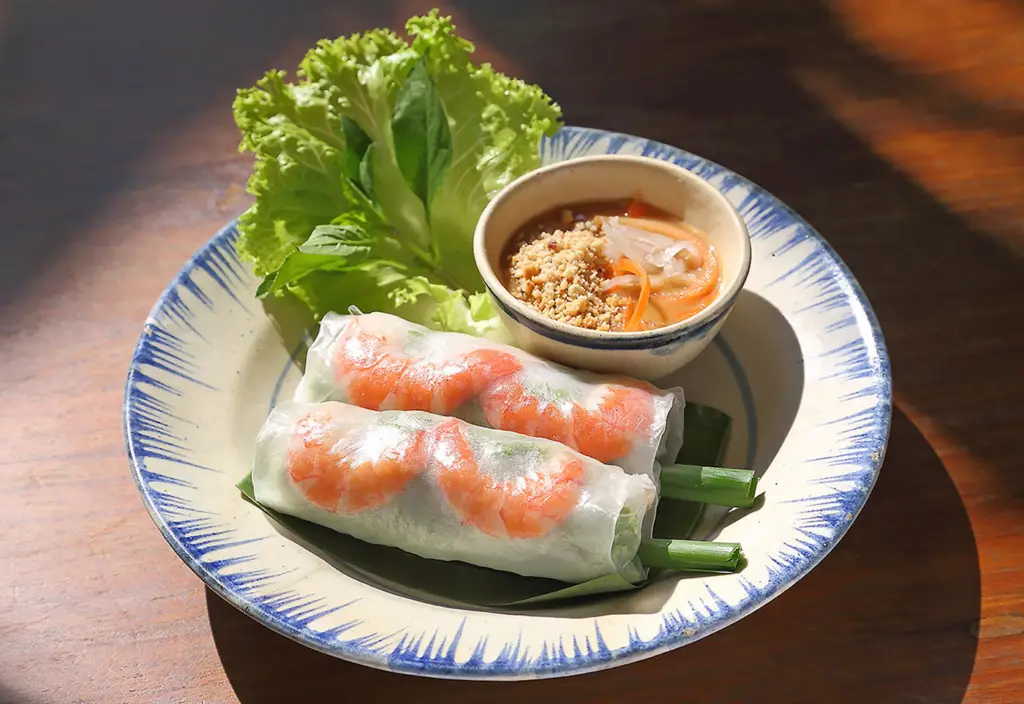
These are rice paper rolls packed with shrimp, herbs, pork, rice vermicelli, and other ingredients. Typically served at family gatherings or during the Tet holiday, they signify freshness and renewal.
Vietnam Cuisine – Ingredients for Gỏi cuốn
- Rice paper
- Cooked prawns, peeled and halved
- Slices of pork belly, boiled
- Rice vermicelli, cooked and cooled
- Lettuce leaves, mint, and cilantro
- Crushed peanuts for garnish
How to prepare Gỏi cuốn
- Dampen the rice paper until soft
- Lay out the prawns first, then the pork slices, followed by the vermicelli, herbs, and lettuce.
- Roll tight, ensuring the ends are folded in.
Presentation and Serving
- Place them on a plate with the seam side down, garnished with crushed peanuts.
- Accompanied best with a tangy dipping sauce.
Drink Pairing
- A cold glass of Vietnamese iced tea complements the fresh flavors.
Vietnam Cuisine – Chả giò (Fried Spring Rolls)

Deep-fried delights filled with minced pork, shrimp, and glass noodles. Typically served during family get-togethers, they signify warmth and closeness.
Vietnam Cuisine – Ingredients for Chả giò
- Minced pork
- Finely chopped shrimp
- Glass noodles, soaked and chopped
- Minced onions, carrots, and mushrooms
- Seasoning: fish sauce, salt, and pepper
- Rice paper or spring roll wrapper
How to prepare Chả giò
- Mix the filling ingredients well.
- Place a small amount of filling onto the wrapper and roll tightly.
- Deep fry until golden brown.
Presentation and Serving
- Serve hot with fresh lettuce and herbs.
- Best dipped in a spicy and tangy fish sauce.
Drink Pairing
- A refreshing glass of Bia Hơi (Vietnamese draft beer) is perfect.
Vietnam Cuisine – Phở (Noodle Soup)

A fragrant noodle soup with beef or chicken, its origins lie in Northern Vietnam. It’s a staple breakfast item but can be enjoyed any time of the day.
Vietnam Cuisine – Ingredients for Phở
- Flat rice noodles
- Slices of beef or chicken
- Beef or chicken broth
- Spices: star anise, cloves, cinnamon, and cardamom
- Garnishes: lime wedges, bean sprouts, chili, and basil
Vietnam Cuisine – How to prepare Phở
- Prepare the broth by simmering the spices and meat bones for several hours.
- Serve the boiled noodles in a bowl, topped with meat slices and pour the hot broth over.
- Add garnishes as desired.
Presentation and Serving
- Served in a large bowl, always steaming hot. Garnishes are typically placed on a separate plate.
Drink Pairing
- A light lager beer or iced jasmine tea complements the aromatic broth.
Vietnam Cuisine – Chả (Grilled Pork with Noodles)

Originating from Hanoi, this dish tells the tale of Vietnam’s street food culture. Bún Chả came into international limelight when former US President Barack Obama enjoyed it with Anthony Bourdain in a Hanoi eatery.
Vietnam Cuisine – Ingredients for Bún Chả
- Ground pork
- Sliced pork belly
- Garlic, minced.
- Shallots, minced
- Fish sauce, sugar, pepper, and lime
- Rice vermicelli
- Fresh herbs (like basil and mint)
Vietnam Cuisine – Bún Chả Preparation Instructions
- Combine ground pork, pork belly, garlic, shallots, fish sauce, sugar, and pepper. Marinate for at least 2 hours.
- Form meatballs from the ground pork mixture.
- Grill pork belly slices and meatballs until charred and cooked through.
- Prepare dipping sauce with fish sauce, sugar, lime juice, and water.
Serving Instructions
Serve grilled pork over cooked vermicelli. Garnish with fresh herbs. Use the dipping sauce to drench or dip as per preference.
Vietnam Cuisine – Cá Kho Tộ (Claypot Fish)

This southern Vietnamese dish signifies the essence of family gatherings. Fish, representing abundance, cooked in a caramelized sauce in a claypot, speaks of tradition and comfort.
Vietnam Cuisine – Ingredients for Cá Kho Tộ
- Firm white fish steaks (like catfish)
- Garlic, minced
- Shallots, minced
- Black pepper
- Caramel sauce (sugar and water)
- Fish sauce
Preparation Instructions
- Caramelize sugar with a little water until golden.
- Add garlic, shallots, and fish steaks to the caramel sauce.
- Season with fish sauce and black pepper.
- Simmer until fish is cooked and the sauce is thickened.
Serving Instructions
Serve the fish hot in its claypot, ensuring the caramel sauce generously coats each fish steak. Perfect with steamed white rice.
Vietnam Cuisine – Chè Chuối (Banana Tapioca Pudding)
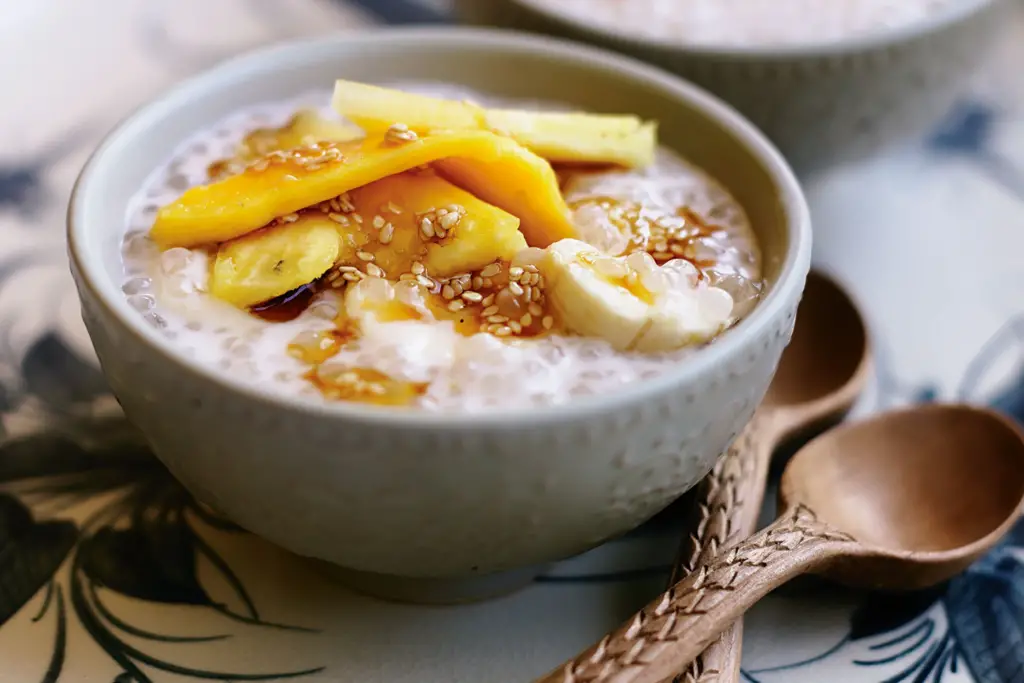
Originating from the tropical heartlands of Vietnam, Chè Chuối is a pudding that showcases the country’s abundant banana harvest. It’s typically served during family gatherings or as an after-dinner treat.
Vietnam Cuisine – Ingredients for Chè Chuối
- Ripe bananas, sliced
- Small tapioca pearls
- Coconut milk
- Sugar
- Pinch of salt
- Toasted sesame seeds or crushed peanuts (for garnish)
- Pandan leaves (optional for aroma)
How to prepare Chè Chuối
Begin by soaking the tapioca pearls in water until they expand. In a pot, combine coconut milk, sugar, and a pinch of salt. Bring this to a simmer, ensuring the sugar dissolves completely.
Add in the soaked tapioca pearls and let them cook until translucent. Now, introduce the banana slices, and if available, a pandan leaf for a unique aroma. Let it simmer until the bananas soften.
Serve it warm or chilled, garnishing with toasted sesame seeds or crushed peanuts.
Presentation and Serving
Pour Chè Chuối into individual bowls.
A sprinkle of sesame seeds or peanuts not only adds to the taste but also gives a beautiful contrast against the milky white of the pudding.
A sprig of mint can also elevate the aesthetics.
Drink Pairing
A light jasmine tea or ginger tea complements the sweetness of Chè Chuối, creating a soothing palate experience.
Vietnam Cuisine – Bánh Dầy Giò (Sticky Rice and Pork Pudding)

Steeped in history, Bánh Dầy Giò is associated with the Lunar New Year festivities. This dish pays homage to Vietnam’s agrarian roots, highlighting its staple: rice.
Vietnam Cuisine – Ingredients for Bánh Dầy Giò
- Glutinous rice flour
- Cooked pork belly, thinly sliced
- Ground black pepper
- Sugar
- Warm water
- Banana leaves (for wrapping)
How to prepare Bánh Dầy Giò
Knead the glutinous rice flour with warm water to form a dough. Mold them into flat, circular shapes.
Place a slice of pork belly on top, sprinkle with black pepper and sugar, then fold and wrap securely with banana leaves.
Steam these packages until the rice dough becomes translucent.
Presentation and Serving
Unwrap the banana leaf to reveal the pudding. The rich hues of the pork against the sticky rice make it visually appealing. Serve it with a side of soy or fish sauce for added flavor.
Drink Pairing
A light lager beer or a cup of green tea pairs wonderfully with Bánh Dầy Giò, balancing out its rich textures.
Conclusion
Vietnamese puddings, in their simplicity, capture the essence of the nation’s culinary heritage. Whether you’re savoring the tropical Chè Chuối or the hearty Bánh Dầy Giò, you’re indulging in a piece of Vietnam’s soul.
FAQ’s
What is the staple ingredient in Vietnamese puddings?
Most puddings use rice or its derivatives as the primary ingredient, owing to the country’s rich paddy fields.
Vietnam Cuisine History
Vietnam cuisine history is rich and diverse, influenced by its geographical location and cultural heritage. The cuisine reflects the country’s agricultural practices and is characterized by fresh ingredients and balanced flavors.
Popular dishes include pho, banh mi, and spring rolls. Vietnamese cuisine has evolved over centuries, incorporating Chinese, French, and other influences, making it a unique and flavorful culinary tradition.
Why are banana leaves used in many recipes?
Apart from being readily available, banana leaves impart a unique aroma and also serve as an eco-friendly wrapping.
Is Vietnamese cuisine generally sweet or savory?
Vietnamese cuisine offers a balanced palate, from sweet desserts to savory mains, often with a hint of spice or sourness.
What are the health benefits of Vietnamese food?
Vietnamese food, rich in fresh vegetables, herbs, and lean meats, is considered both flavorful and healthful.
Can I find these ingredients outside of Vietnam?
Yes, many Asian grocery stores worldwide stock ingredients common to Vietnamese cuisine.
Are there vegetarian versions of these puddings?
Absolutely! Ingredients can be substituted or omitted to cater to vegetarian preferences.

